
Trade shows have become the mainstay for major product releases, large public unveilings, and exclusive showcases of achievements. More specifically in the American automotive arena, there are two massive trade show contenders, each ripe with their own distinct opportunities for display. The first of which, The SEMA Show, occurred last month in the desert heat of Las Vegas, Nevada; the second finds sanctuary in the bitter frozen atmosphere of Indianapolis, Indiana during the month of December. I’m speaking, of course, about the Performance Racing Industry show—PRI, for short.
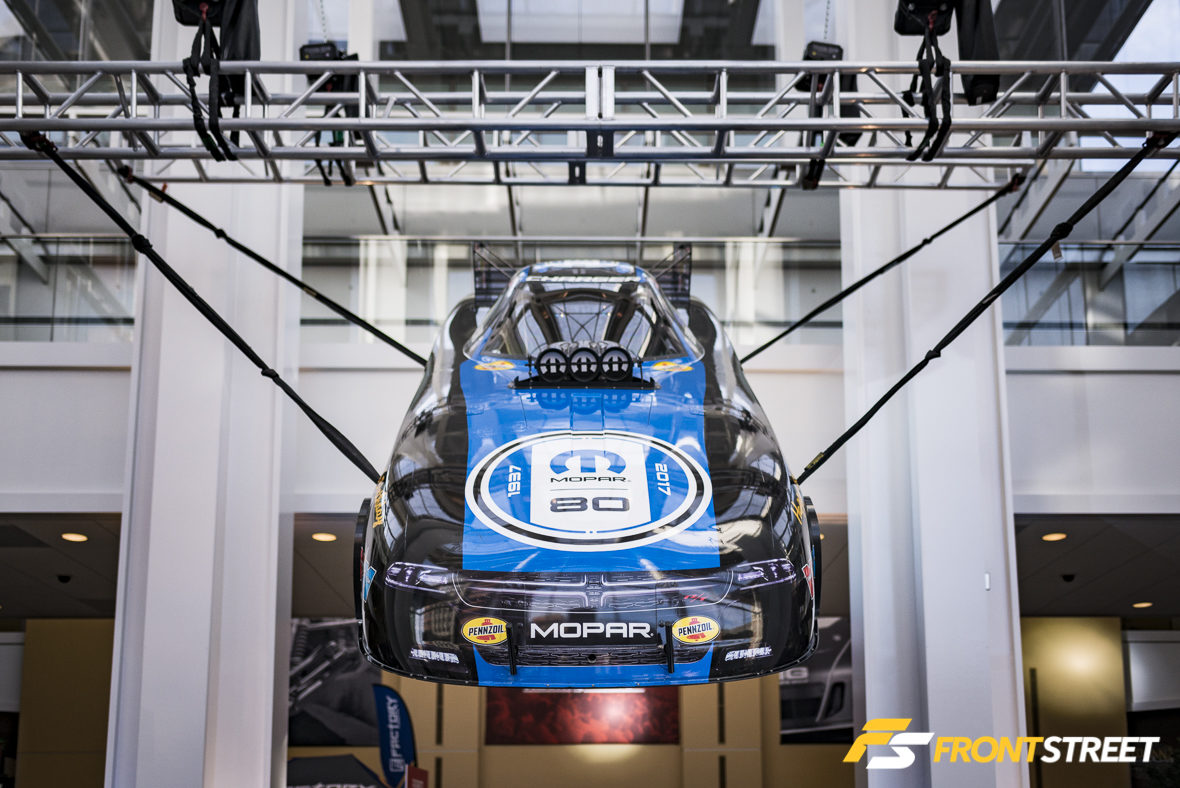
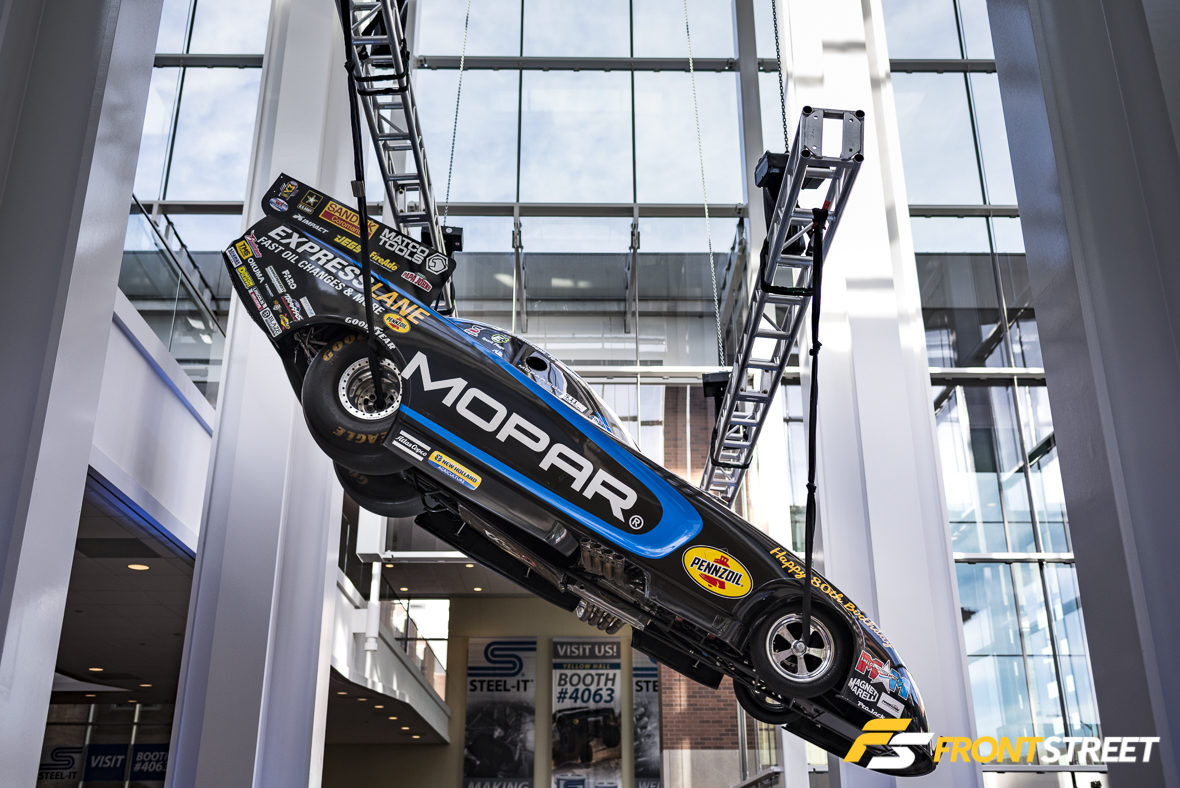
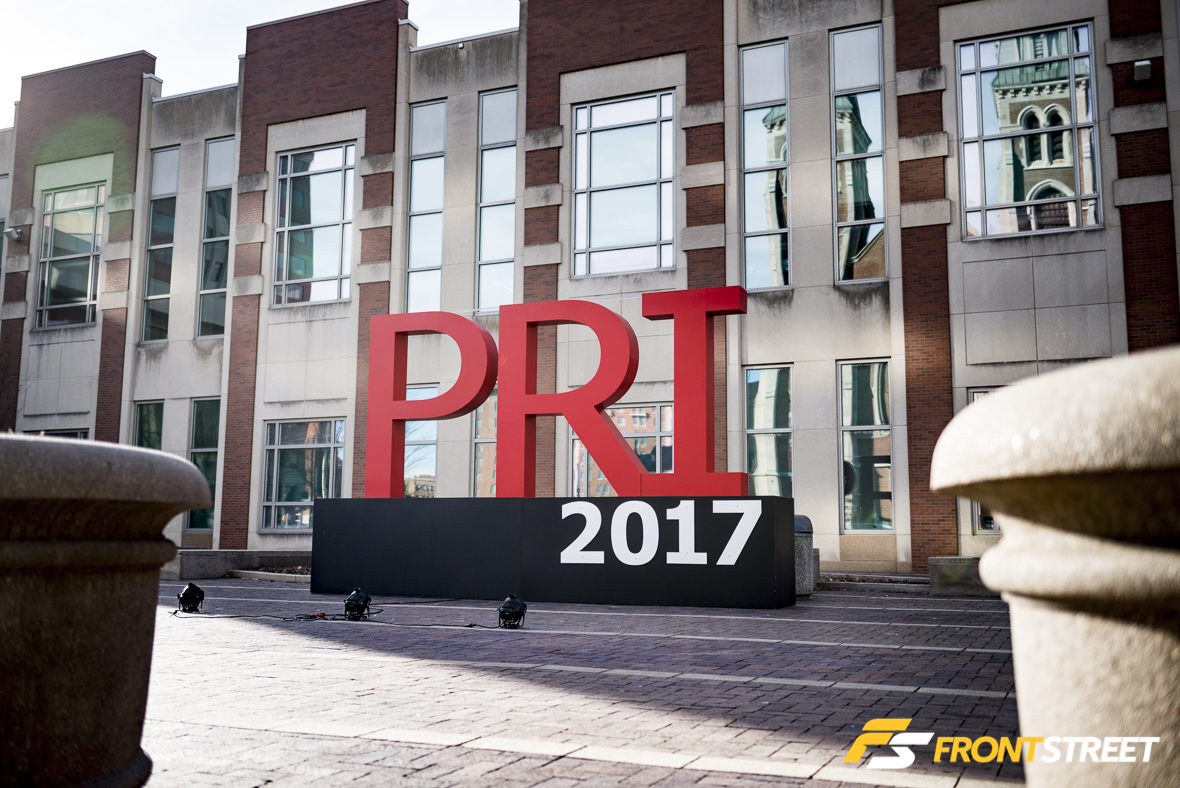
The PRI show, which celebrated its 30th anniversary this year, contains a market unique to that of its larger, albeit more distracting, older brother in Sin City. The layout of PRI is similar, placing vendor booth displays amongst each other, all vying for the attention of the thousands of event attendees. There is a key detail however, which makes PRI have an interesting edge over the other, and that is the word “racing” in its name.

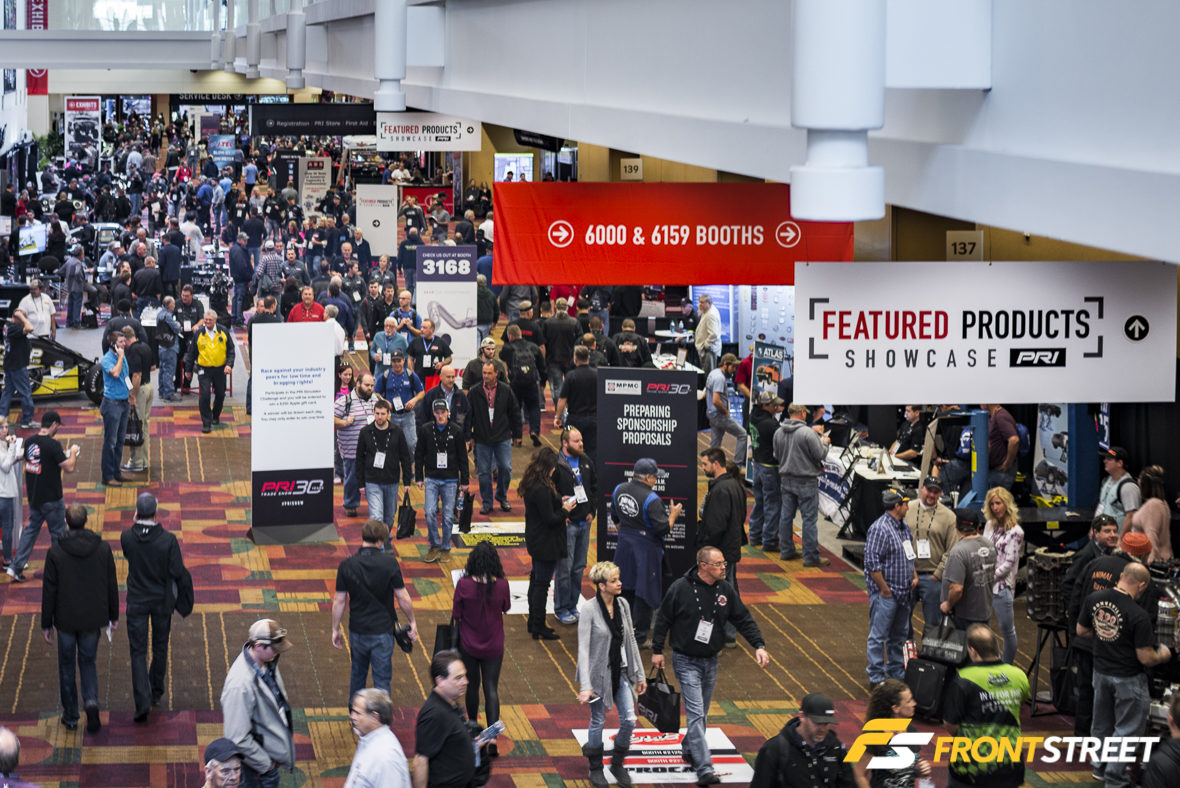
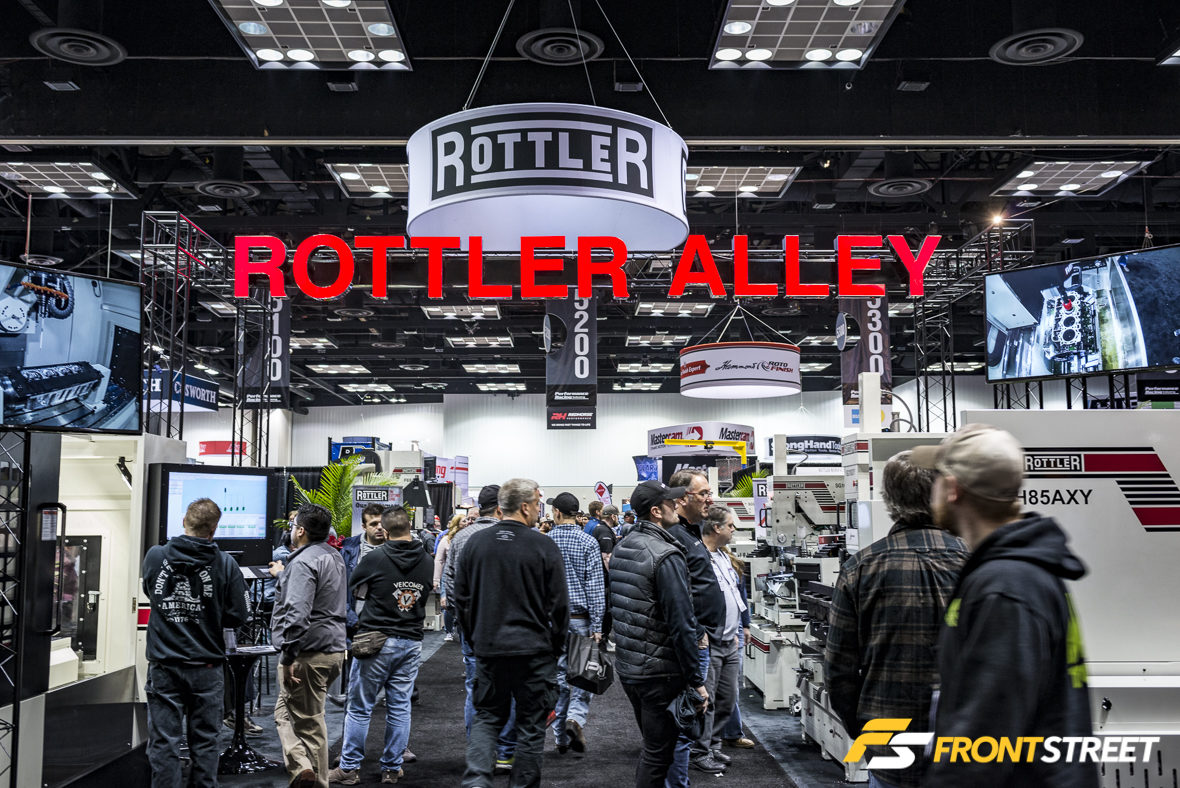
While SEMA represents the latest and greatest from the automotive world as a whole, it tends to get caught up in the glitz and glamour of popular aesthetic trends. At PRI, the exuberance is spared in favor of a smaller; more centralized look at innovation in the world of racing technology. This proves to create a very performance oriented atmosphere, and I’m not talking about speed. More about how driven each attendee is to get down to “brass tacks” on new products or services with the exhibiting vendors.
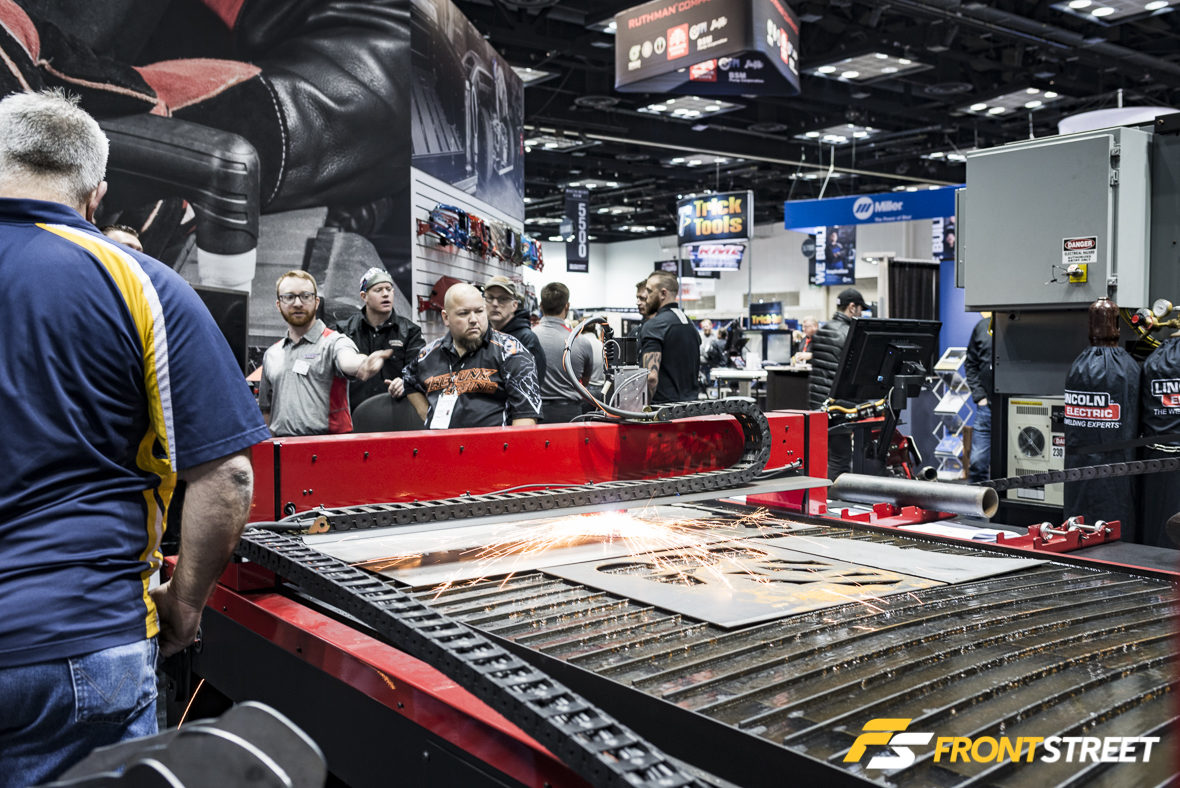
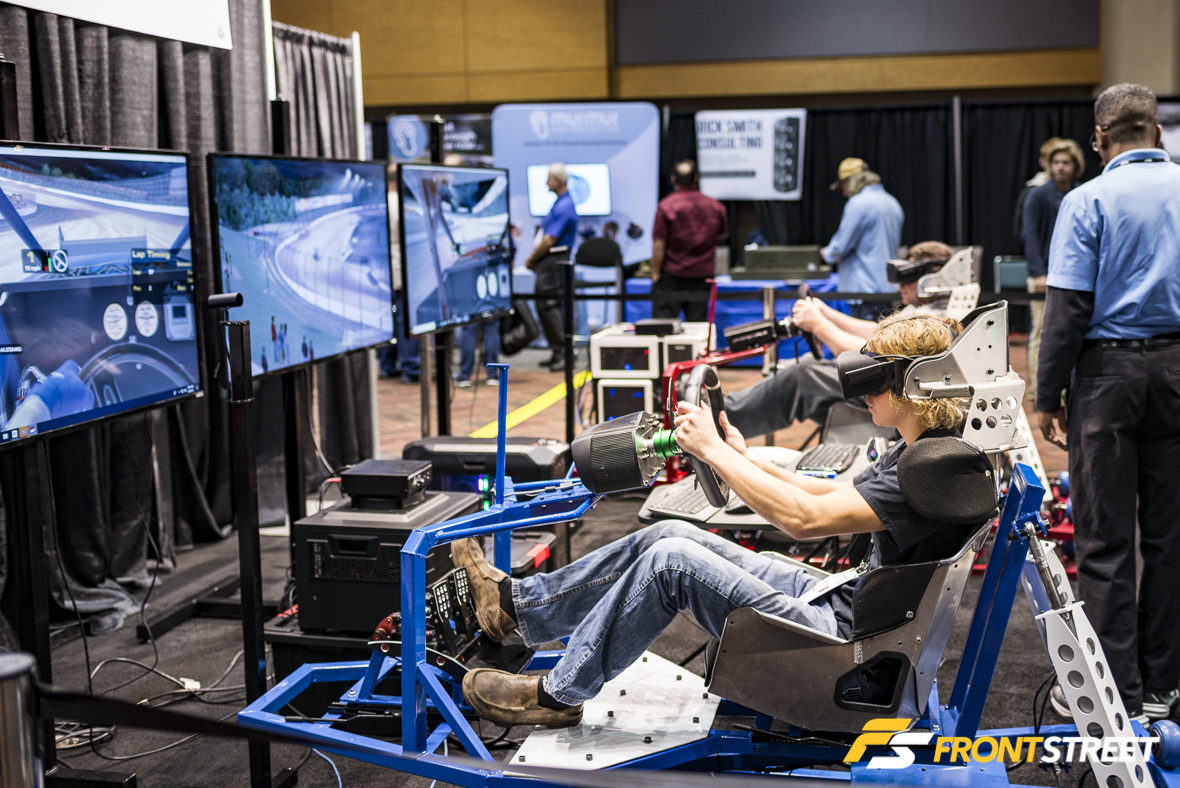
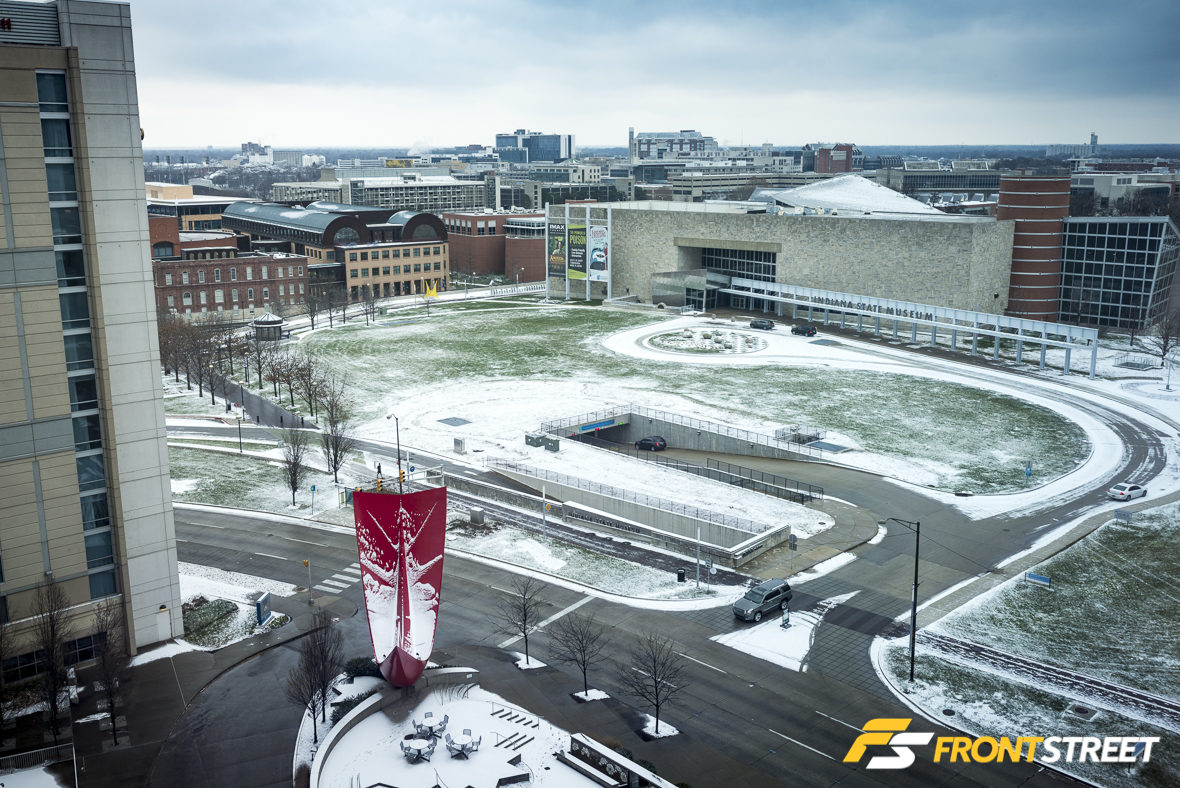
Due to the lack of space in the already-overflowing Indianapolis Convention Center, you won’t find any exhibits that inhabit an entire hall. On that same note, due to the frigid cold temperatures of winter in Indianapolis, there aren’t any parking lots converted to spectator-luring stunt driving courses either. What it does contain are 1,100 exhibiting vendors, hundreds of advanced racecars from various disciplines, and thousands upon thousands of attendees eager to learn more about their specific performance field.
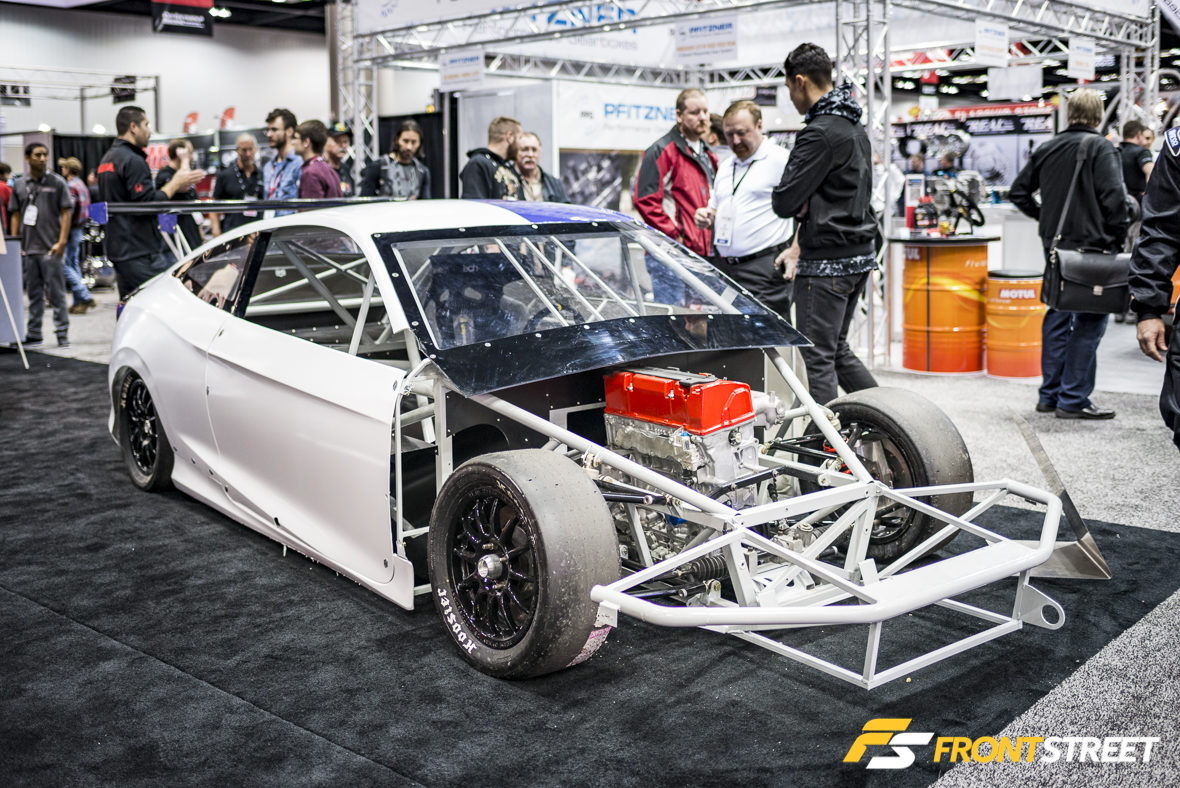
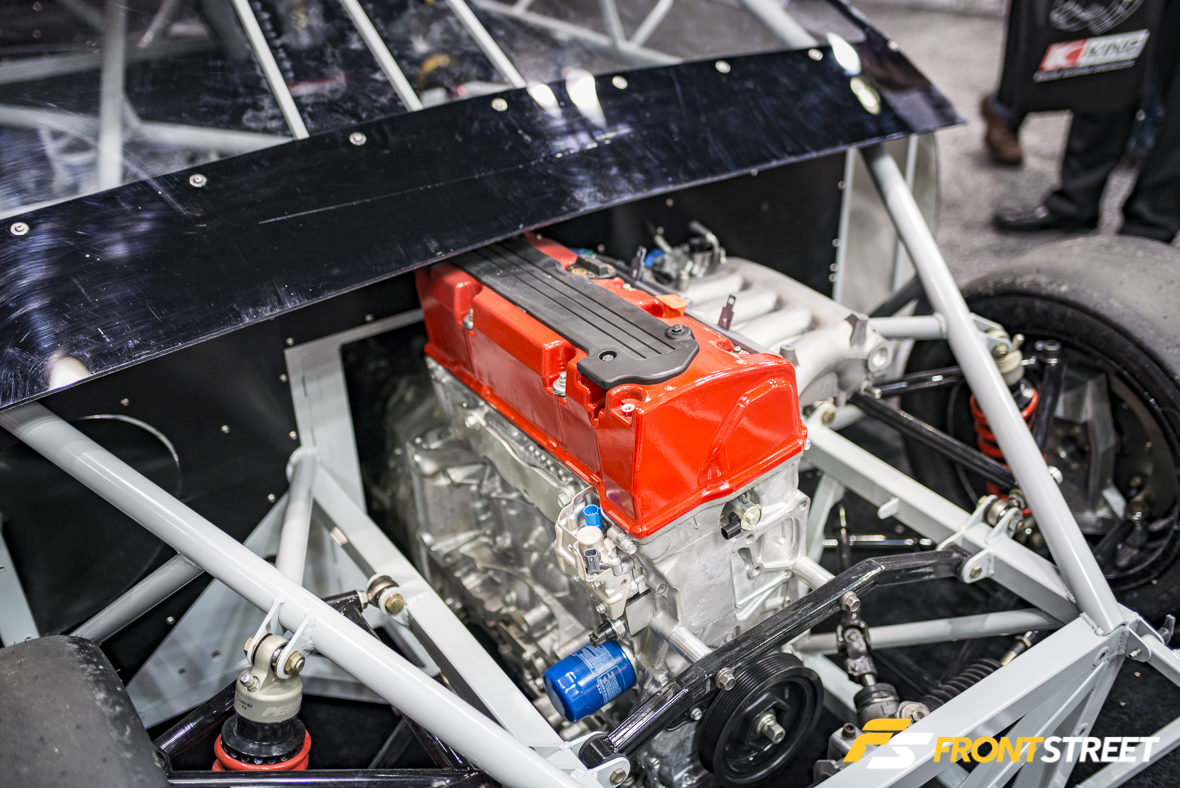
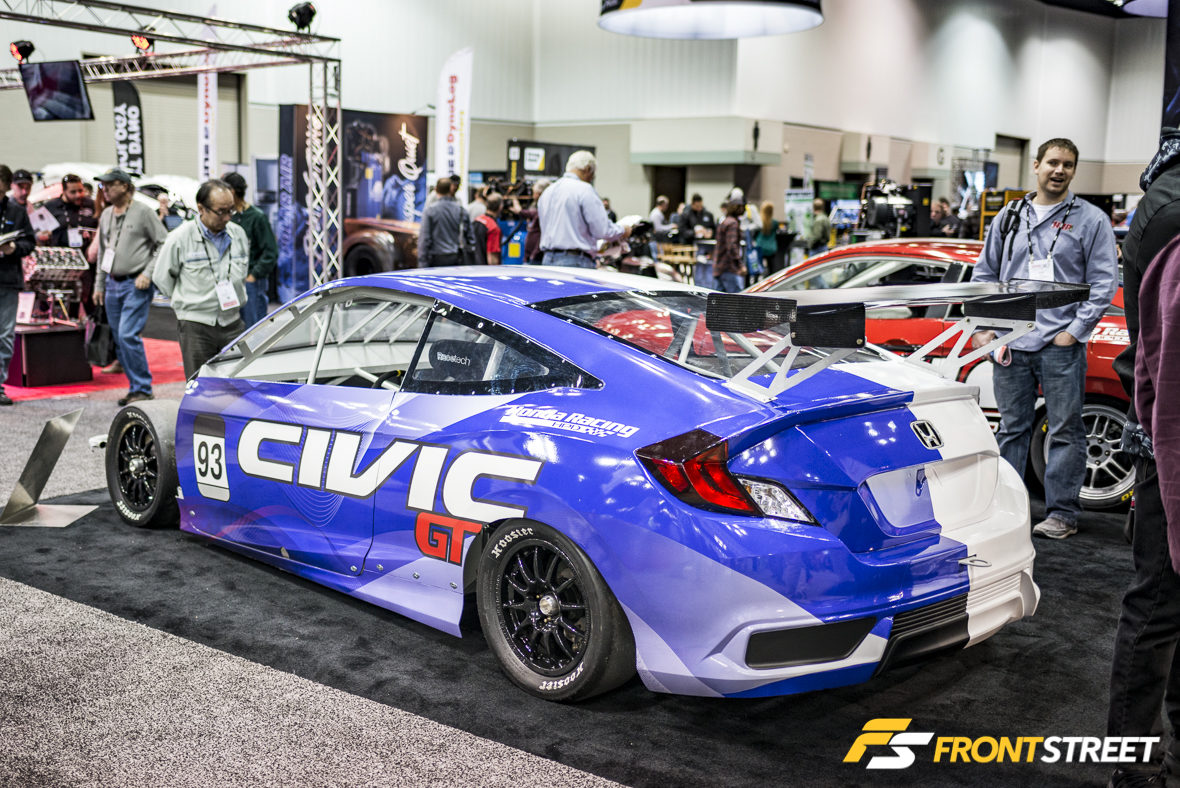
Let’s start with a personal favorite, the Honda Racing / Honda Performance Development (HPD) booth. Parked without its nose piece on the corner of their booth was the new Civic GT Concept Race Car. A Frankenstein 2.4-liter engine—K24 block with a K20 head—powers this combination of tube chassis and fiberglass bodywork, while an S2000 transmission transfers the power to the rear wheels. Yes, it’s rear-wheel-drive. It is only a concept, so its actual use is still a mystery, but it could offer an inexpensive GT race platform in the near future.
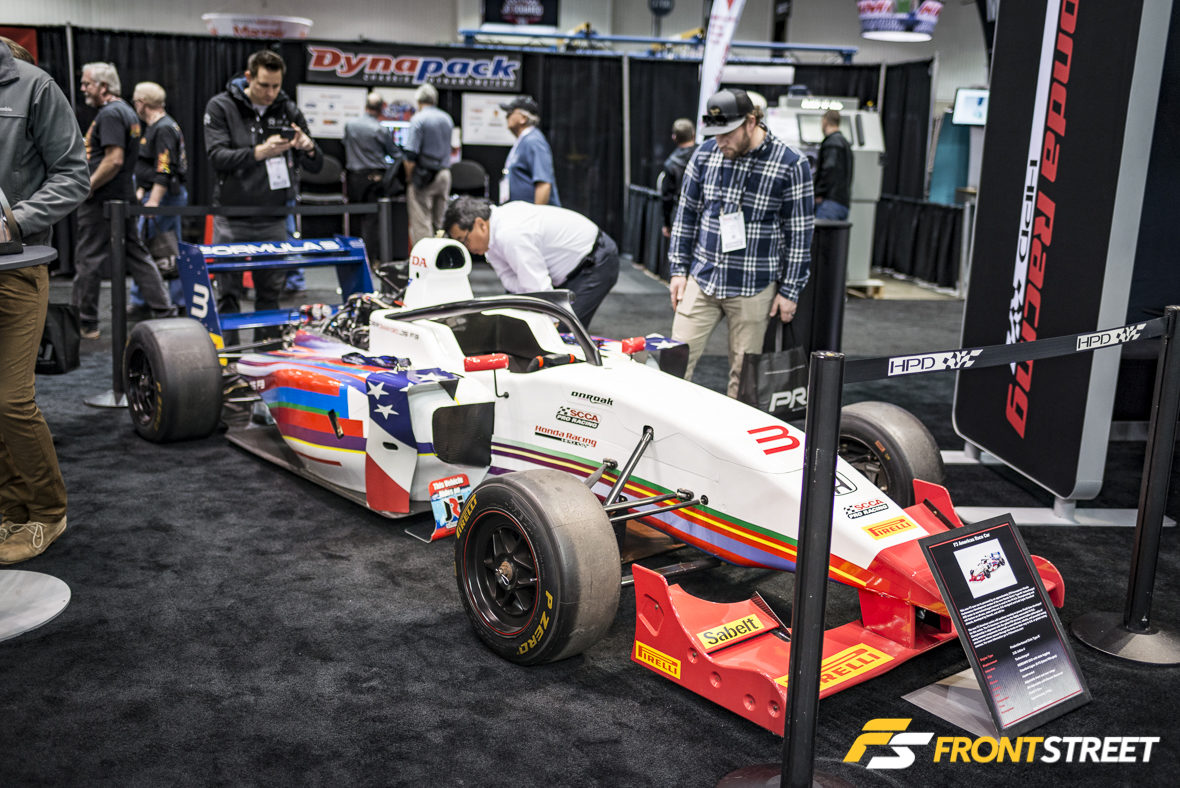
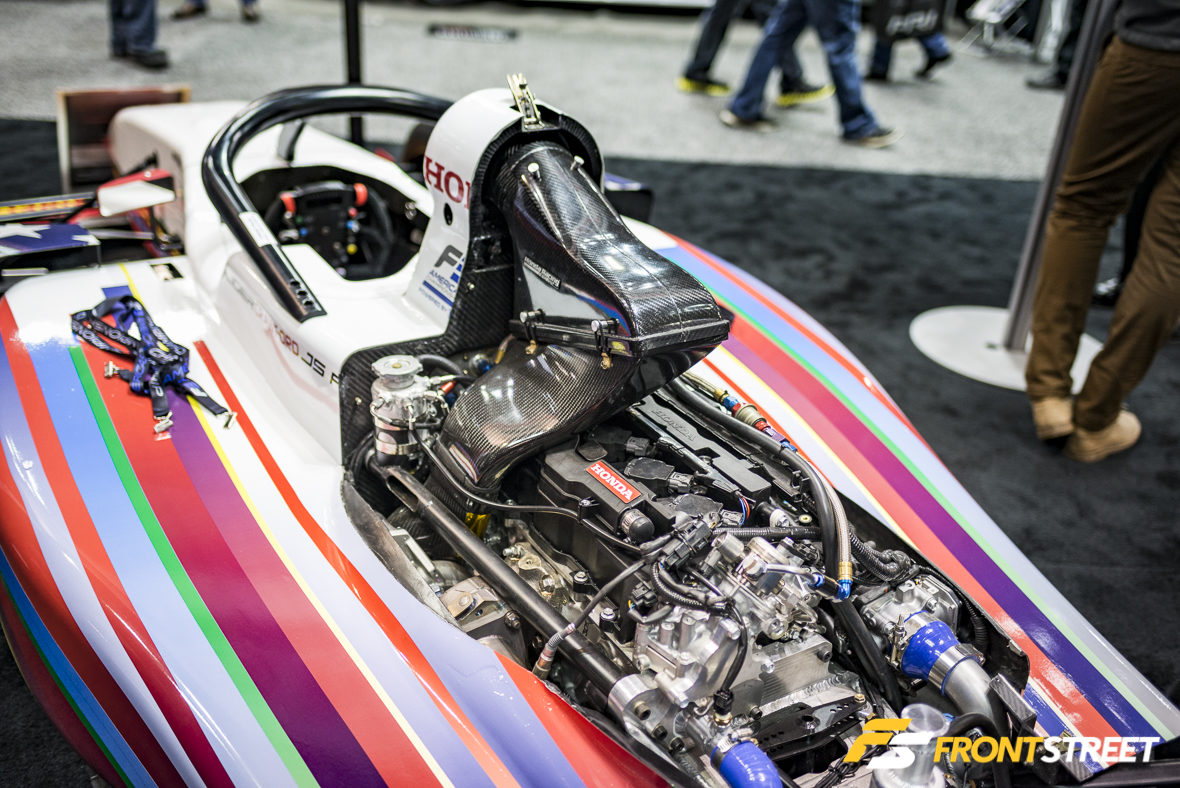
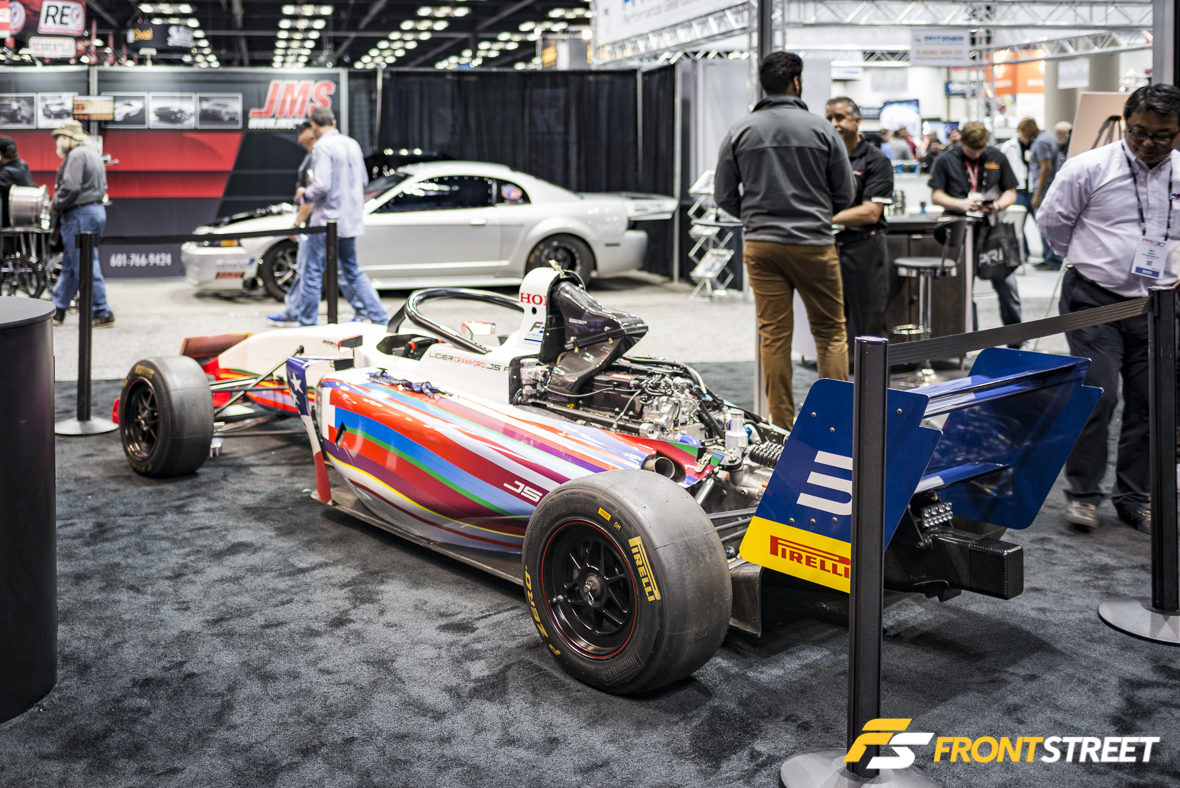
The real star of their booth for me was the new Ligier/Crawford Composites Formula 3 Americas open-wheel racecar. A new series for promising young karting talents who have excelled through the F4 class, this competition will fit directly into the global FIA development ladder as a cost efficient step toward racing glory. The car, powered by an HPD-tuned version of the K20C engine from the 2017 Honda Civic Type R road car, will hopefully breed a new generation of capable American drivers who can progress into the ranks of international open-wheel racing cups.
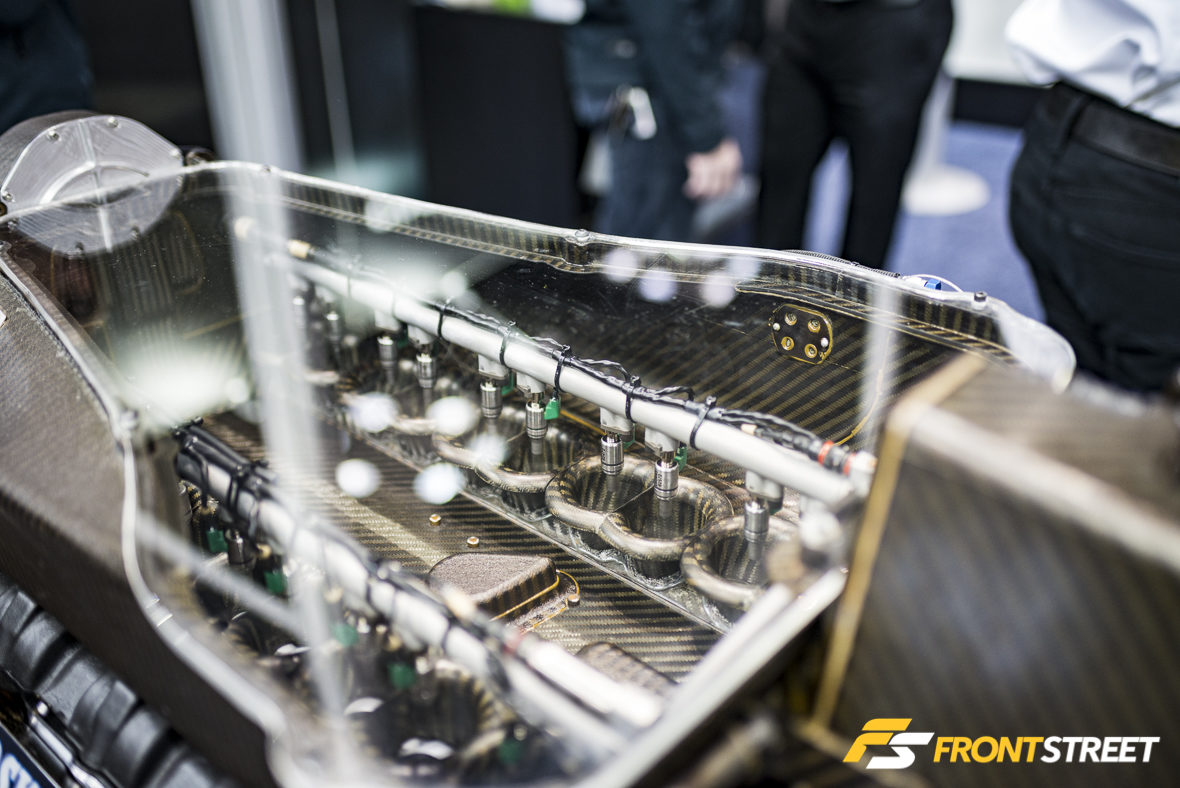
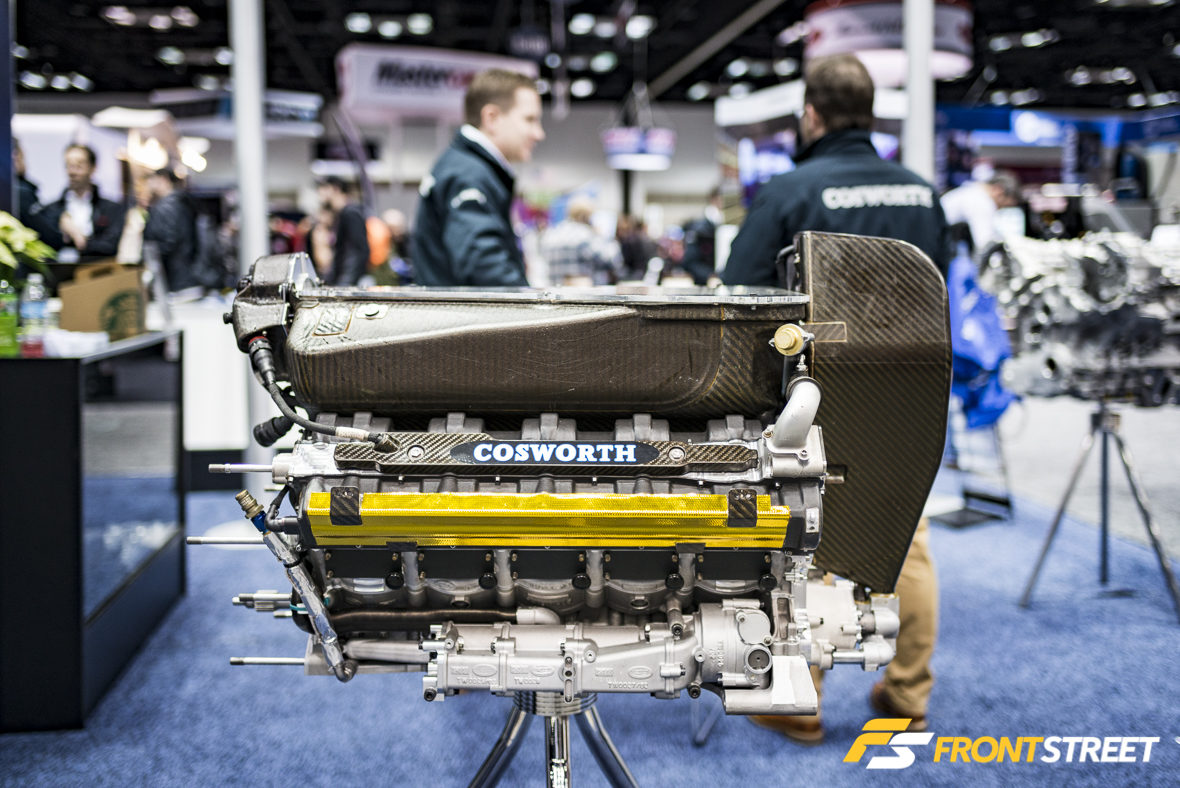
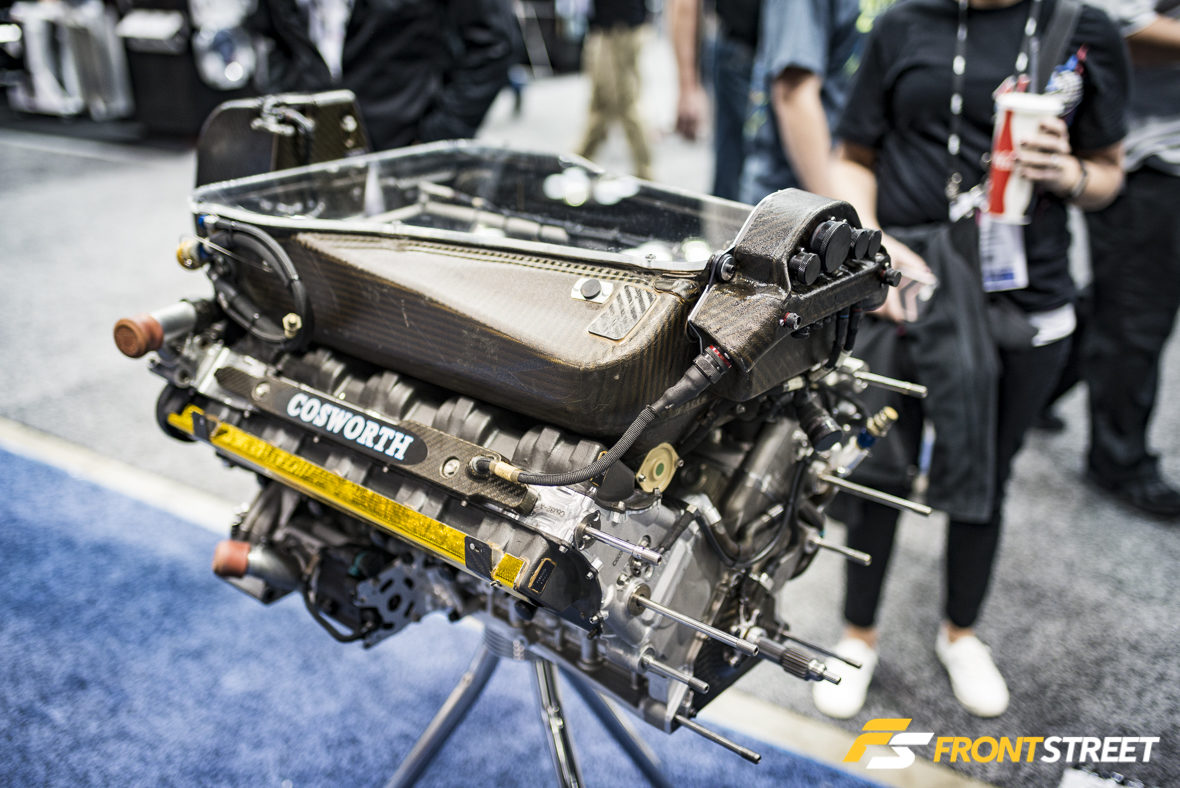
The Cosworth booth was all business, showcasing some of their older upper-echelon developments, alongside some of their newest road-going advances. The first thing I noticed was their CR-2 Formula 1 power plant. This naturally aspirated 3.0-liter, 72-degree V10 was used in the Jaguar Racing Formula 1 teams during the 2000-2004 seasons, before the team was sold to Red Bull Racing for the 2005 season.
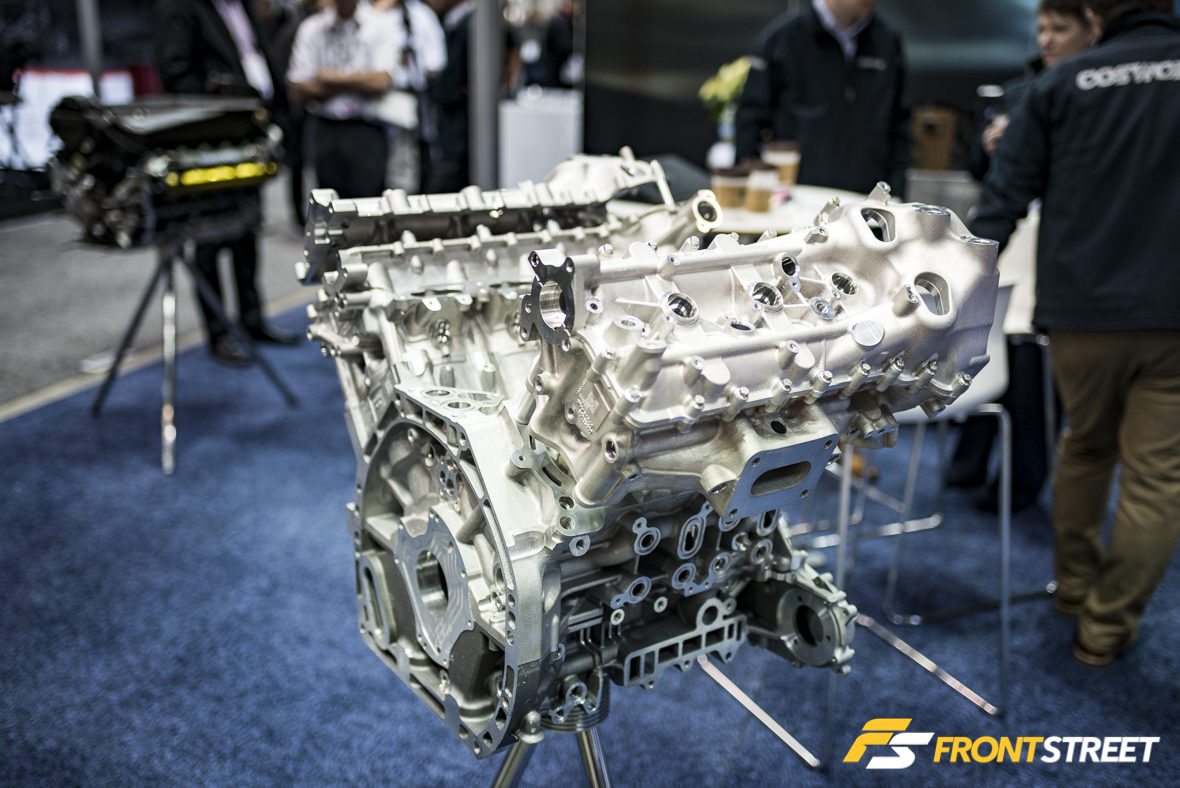
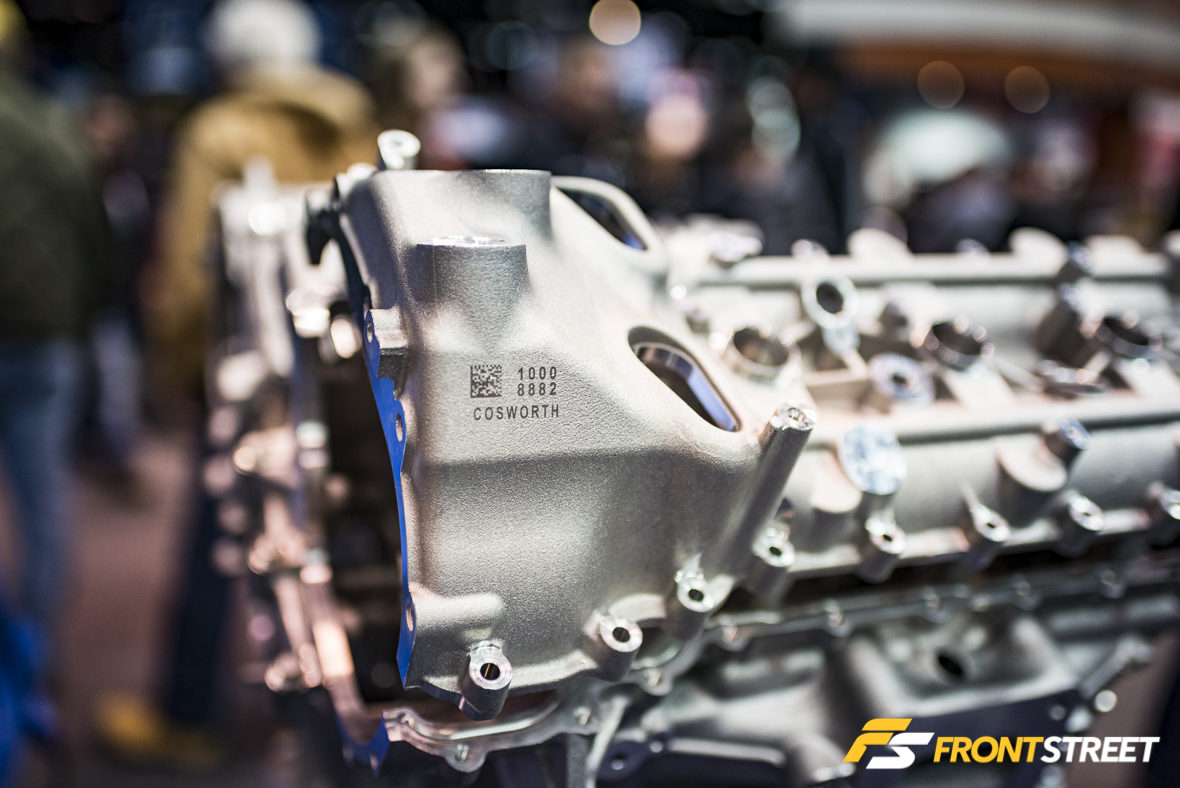
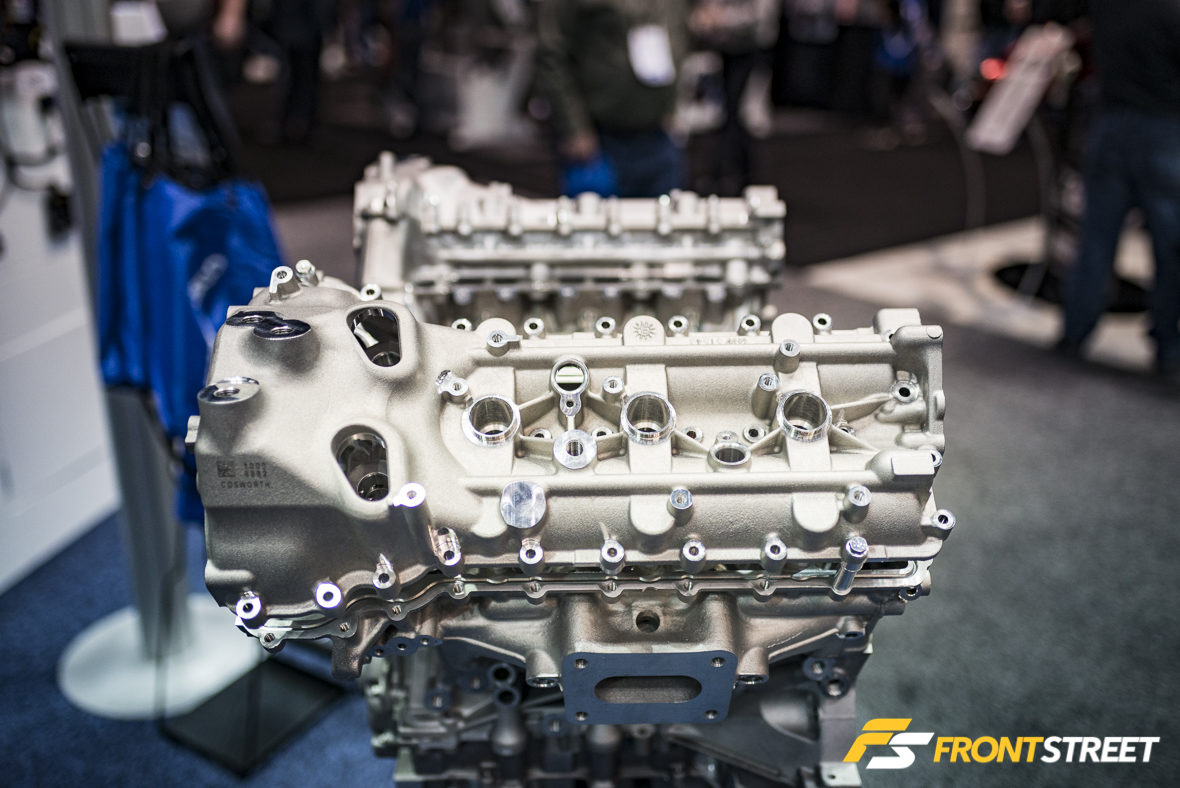
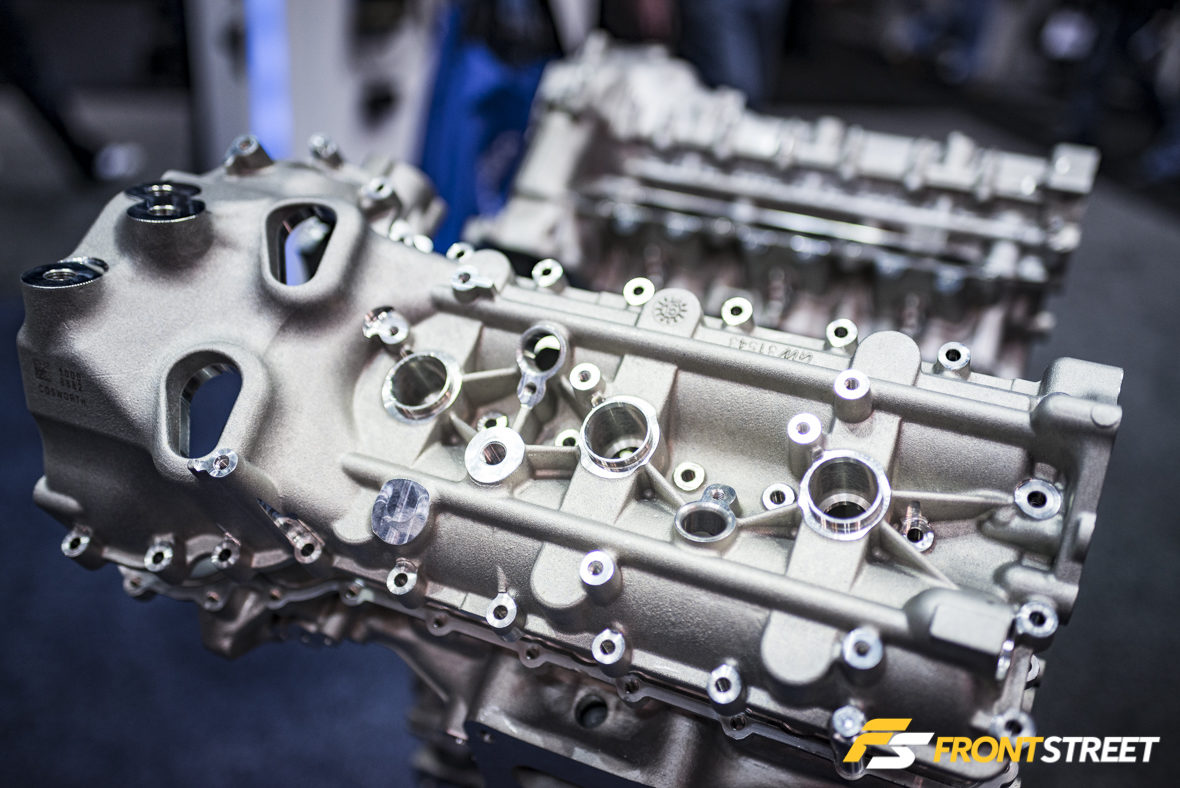
At the other end of their booth was this engine casting complete with all finished machining. This work of art is the V6 engine for the new Acura NSX. The fresh hybrid supercar’s engine block and heads are designed, casted, and machined by Cosworth before being twin-turbocharged and affixed to the midship mounts of the Acura. It was a gorgeous gem just like the Formula 1 engine, which really caught my eye and explains only a fraction of what the company is capable of.
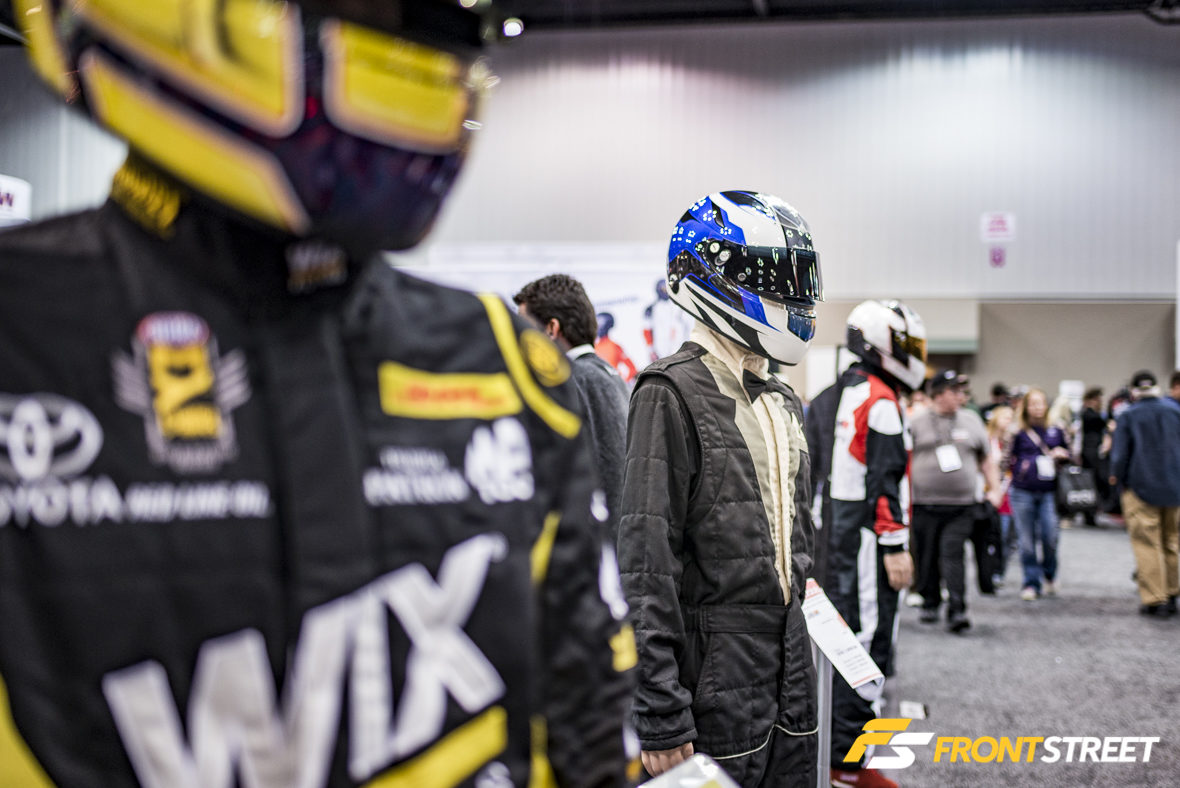

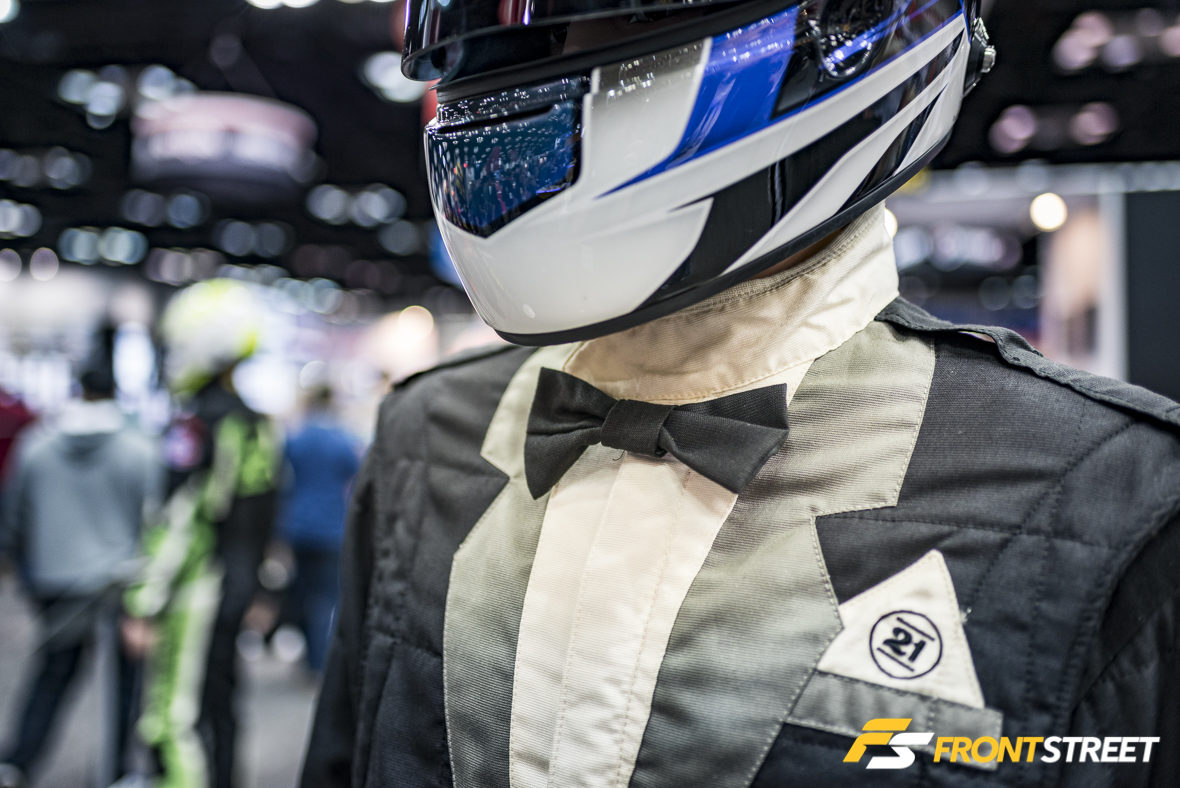
Have you been stressing about how you’ll attend that terribly timed black-tie gala directly after your next race? No problem, French supplier Stand21 Racewear had this tuxedo race suit on display, and I couldn’t help but stop and smile. This breathable two-layer SF1 3.2A Level 5 homologated suit is made to be lighter weight, so you can easily spray champagne on the podium in the classiest of wins, but also sip champagne whilst completing your secret mission as an international spy without being made.
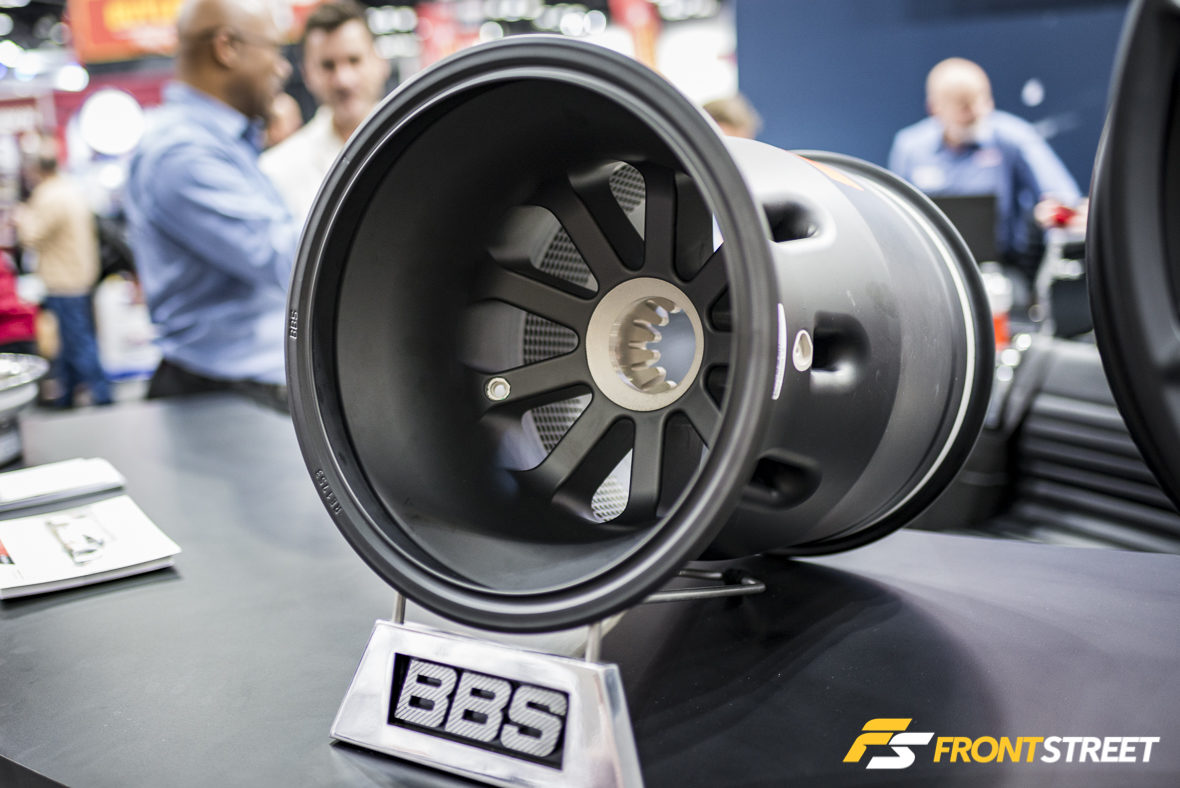
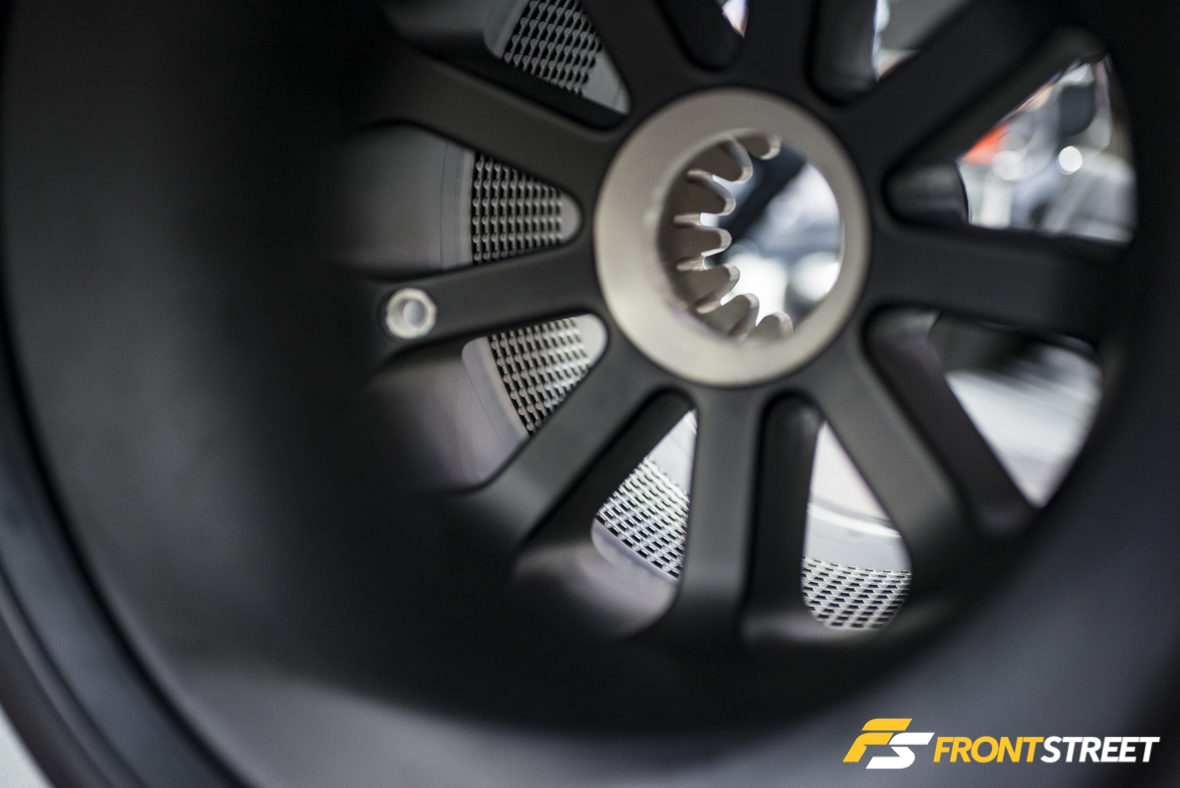
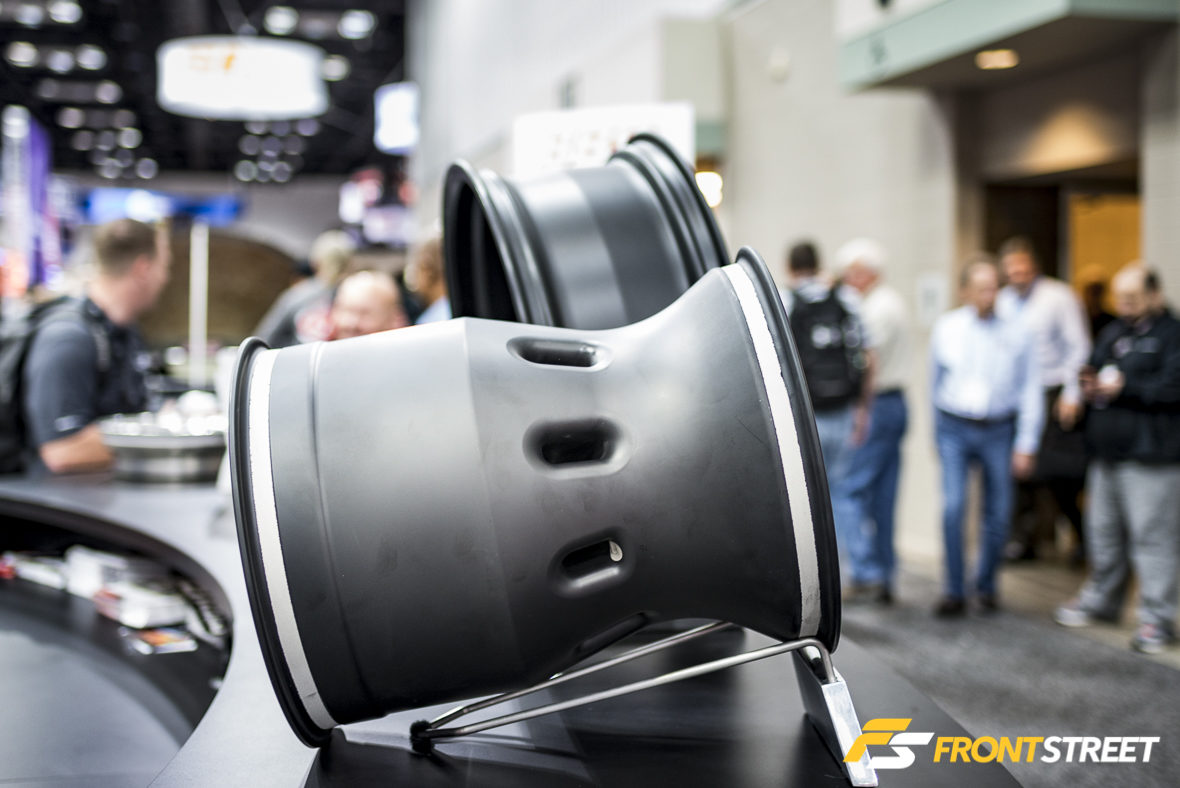
I have mentioned Formula 1 being the pinnacle of motorsport before, so when parts manufacturers are involved with the sport, it helps us all as their research and development usually finds its way down to road cars eventually. In the case of BBS’s newest Formula 1 wheel, the future looks bright. Used specifically by the Sahara Force India F1 team in 2017, this magnesium roller was designed with rigidity and proper heat dissipation in mind. Since there is quite a hefty minimum weight for wheels in F1, creating the lightest weight wheel would be of no use. Instead utilizing the weight threshold efficiently produces the best results. For this design BBS Motorsport machined hundreds of small heatsinks into the barrel in the exact location of the car’s braking system. The brakes of an F1 car create an obscene amount of heat necessary for the friction material to work properly, and these bumps gather that precious energy and push it into the wheel surface. Also in the mindset of transferring heat to its desired area, the spokes are hollow from the hub to the barrel. Rather than a normal wheel which only transfers heat to the tires on its contact points on the edges, this wheel allows the epicenter of braking heat to disperse into the barrel, where tire temperatures can be elevated sooner and more evenly across their surface. This is magical stuff, ain’t it?
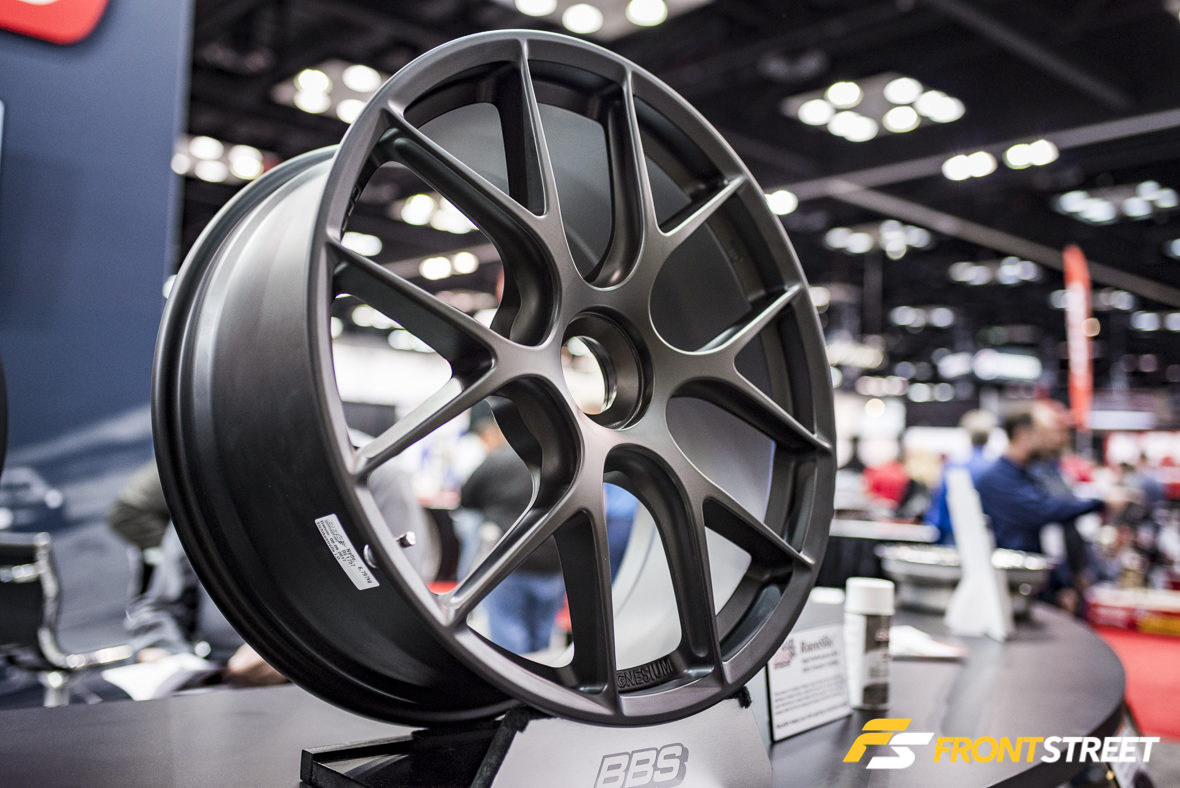
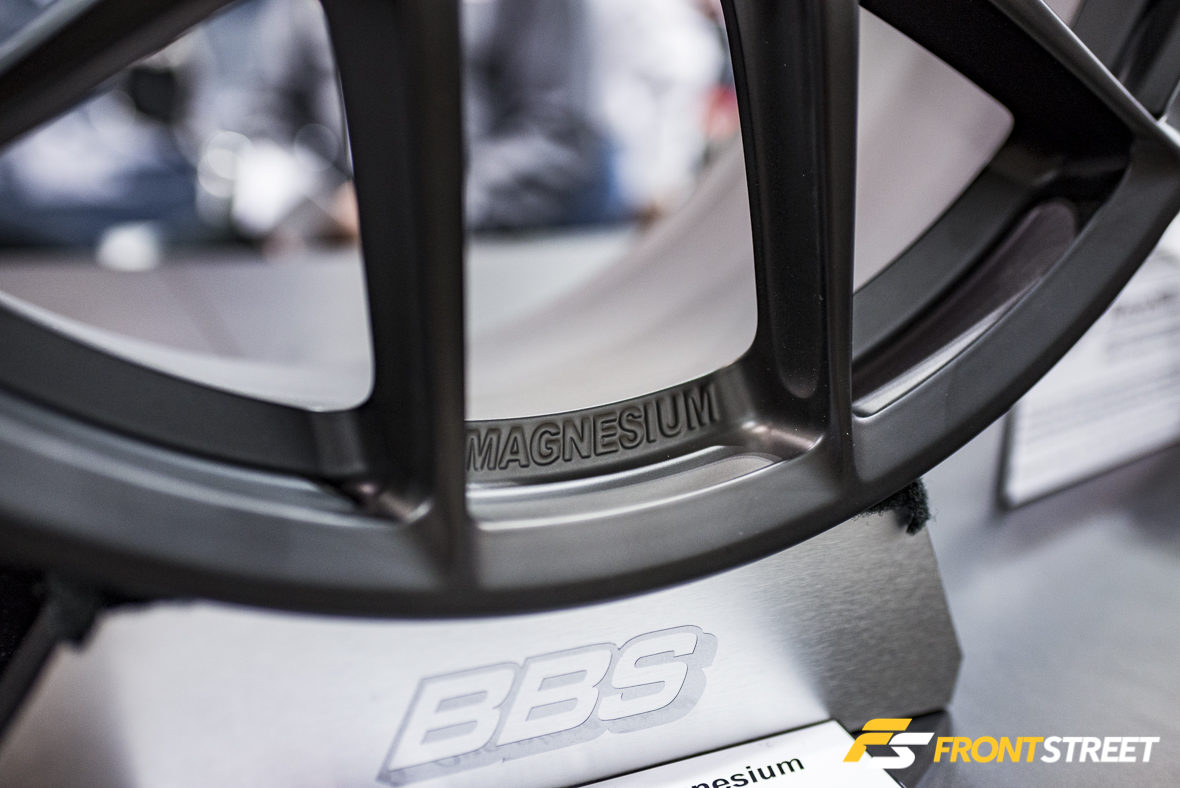
Transfer to their road-going section, BBS has produced this strong forged magnesium 20-inch wheel as part of their partnership with Porsche. The Stuttgart conglomerate offers this wheel as part of their “Weissach” package on special cars like the 918, and new GT2 RS. The full set of BBS Forged Magnesium wheels are 32.4-percent lighter than the traditional OE wheels, which save a massive total of 32 pounds of unsprung weight. Oh, and this 20×9-inch front wheel is completely available for purchase and only weighs 4.7 pounds more than the F1 wheel.
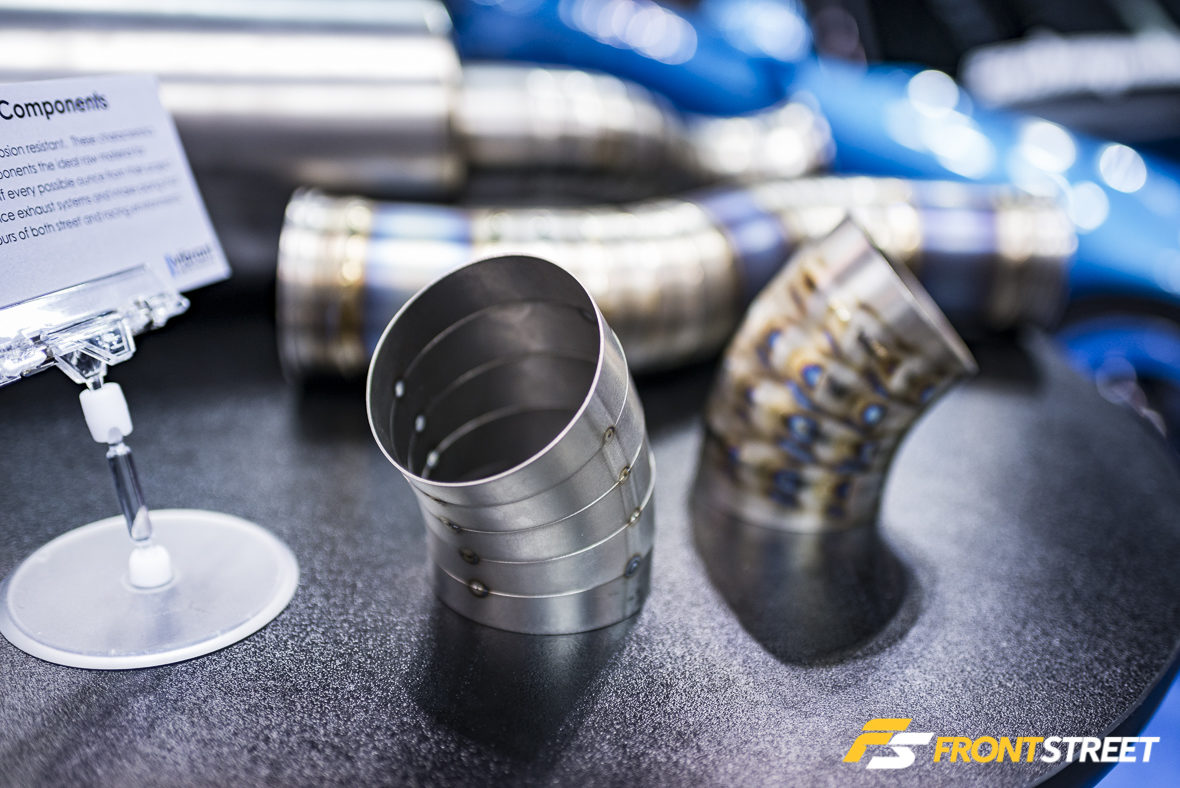
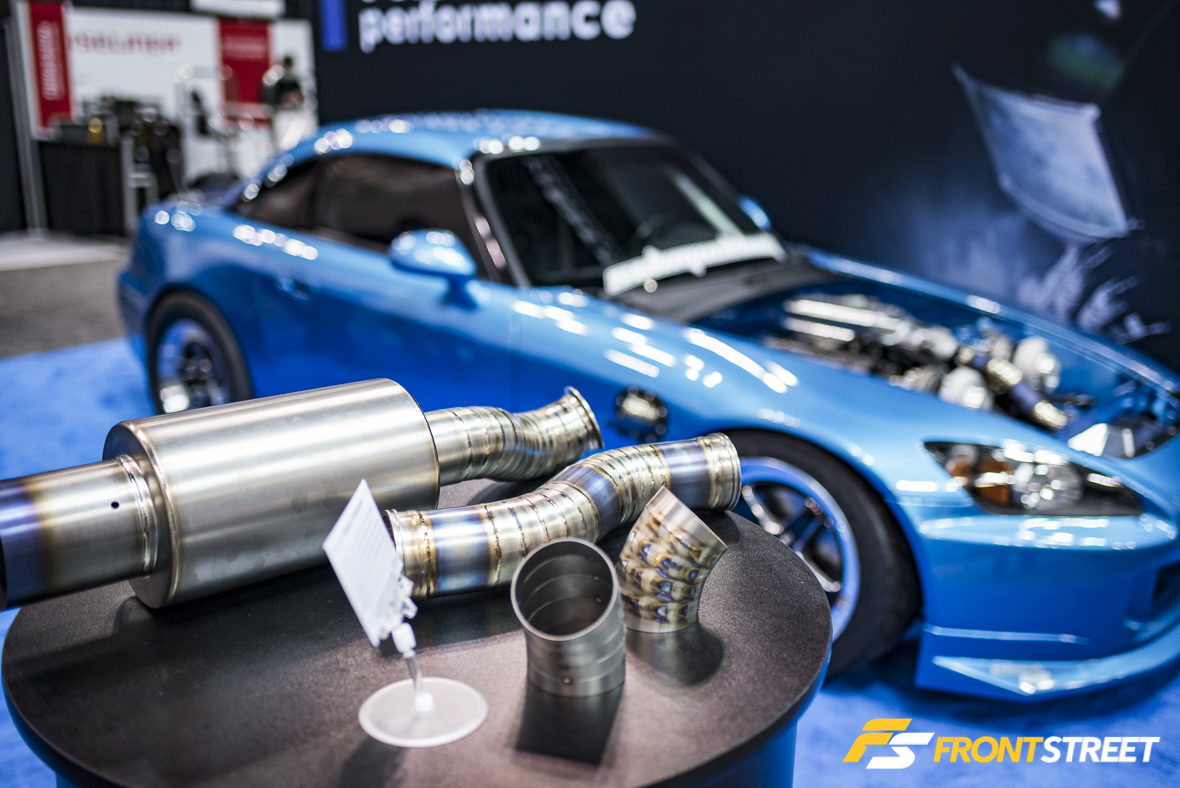
While we’re on the topic of alternate materials, let’s transition over to the Vibrant Performance booth where their newest product line is making its way into more projects. Now offering a complete titanium line of tubing and mufflers, Vibrant Ti is lightweight, tough, and corrosion resistant at the same time. This fills a void in the fabrication market for customers looking to create a system that weighs less than a stainless steel setup, without sacrificing the strength like aluminum construction would.
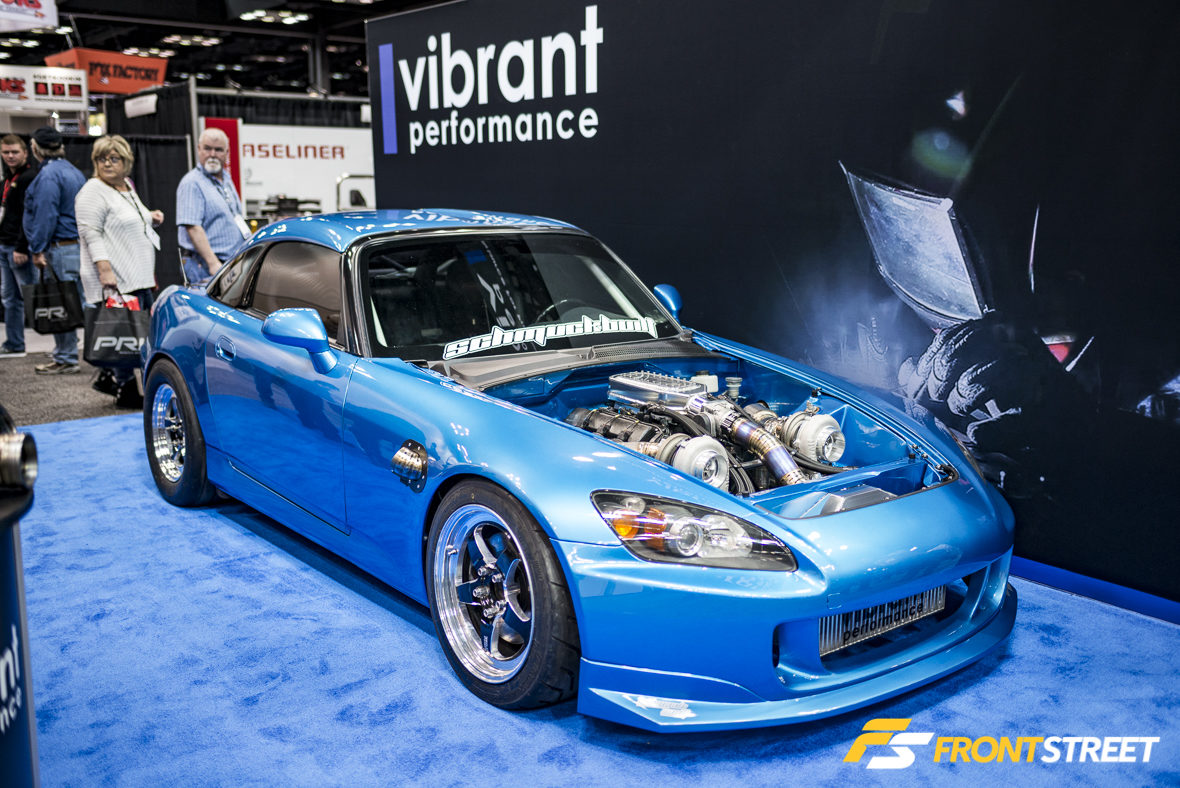
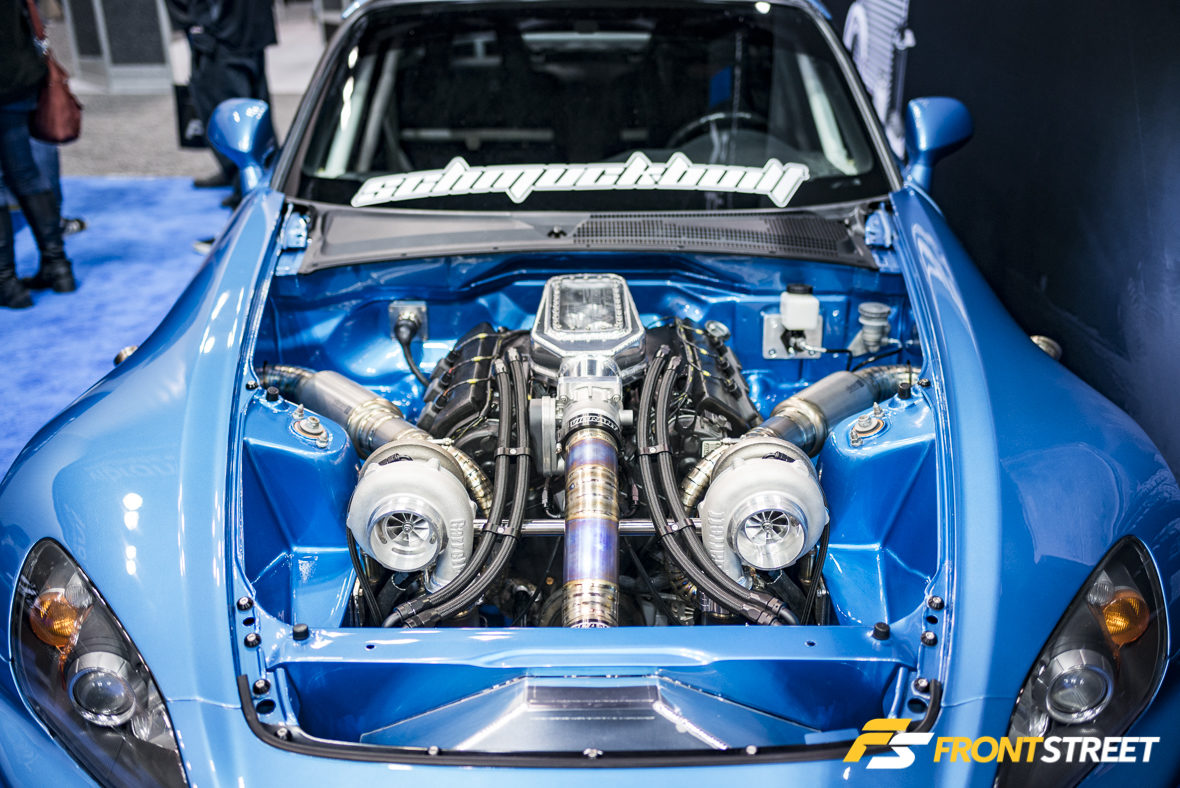
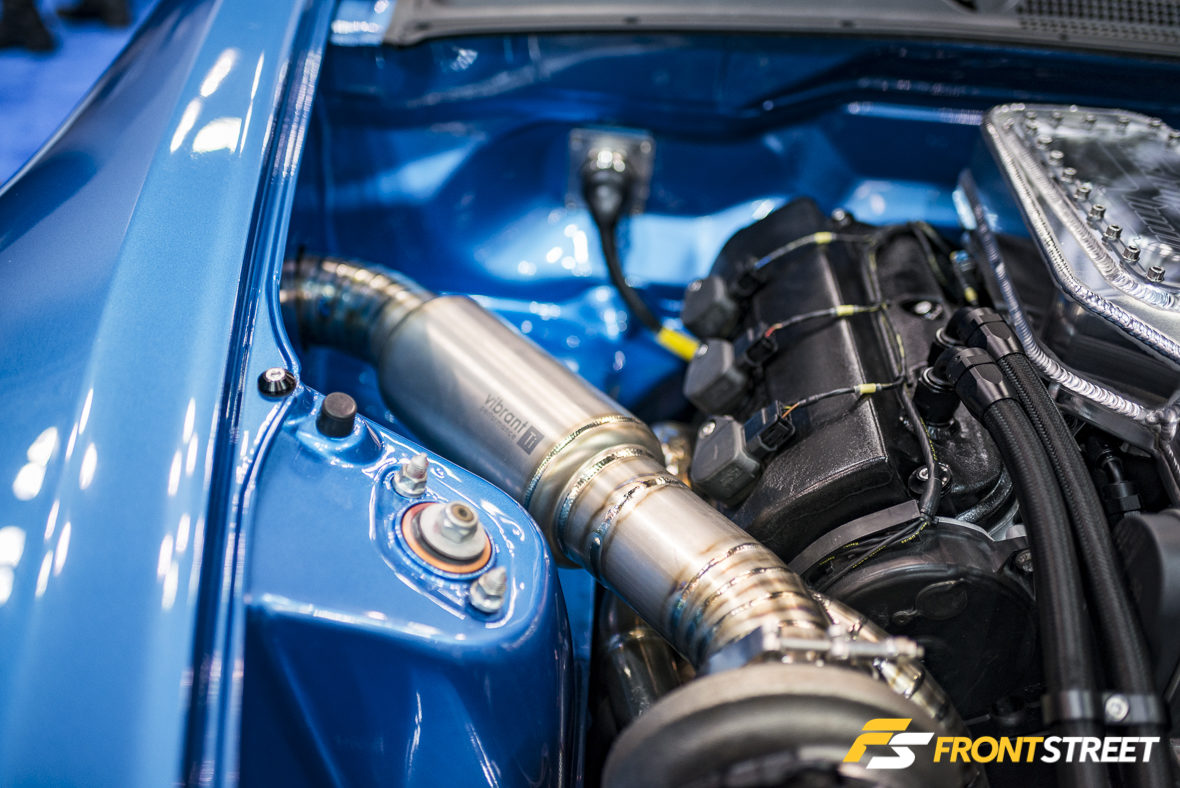
Putting these parts into action, Jason Schmuck’s twin-Garrett-turbocharged, J-series engine swapped Honda S2000 was on display for all to see. The engine bay of the dragster was riddled with gleaming pie-cut titanium tubing and two Vibrant Ti mufflers. To top it all off, the artistic exhaust was enhanced with some specially heated sections, which naturally changes the titanium’s color to a rich bluish-purple hue.
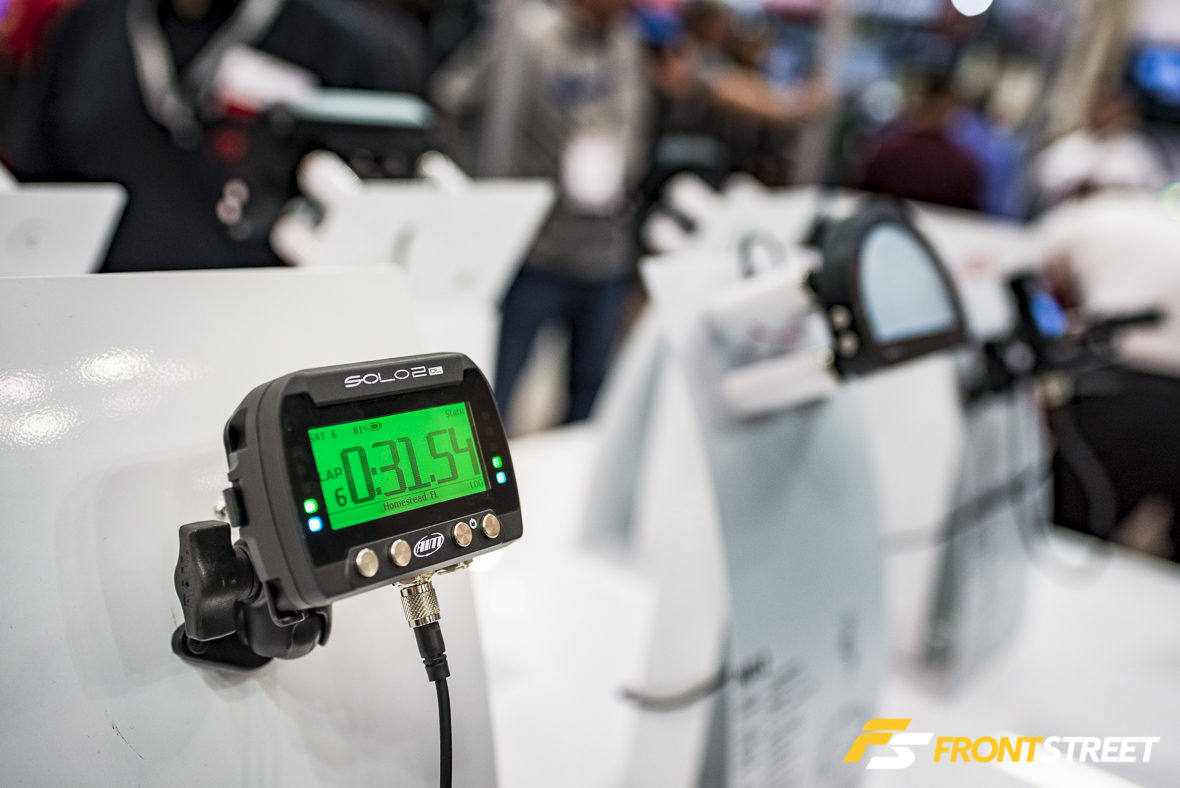
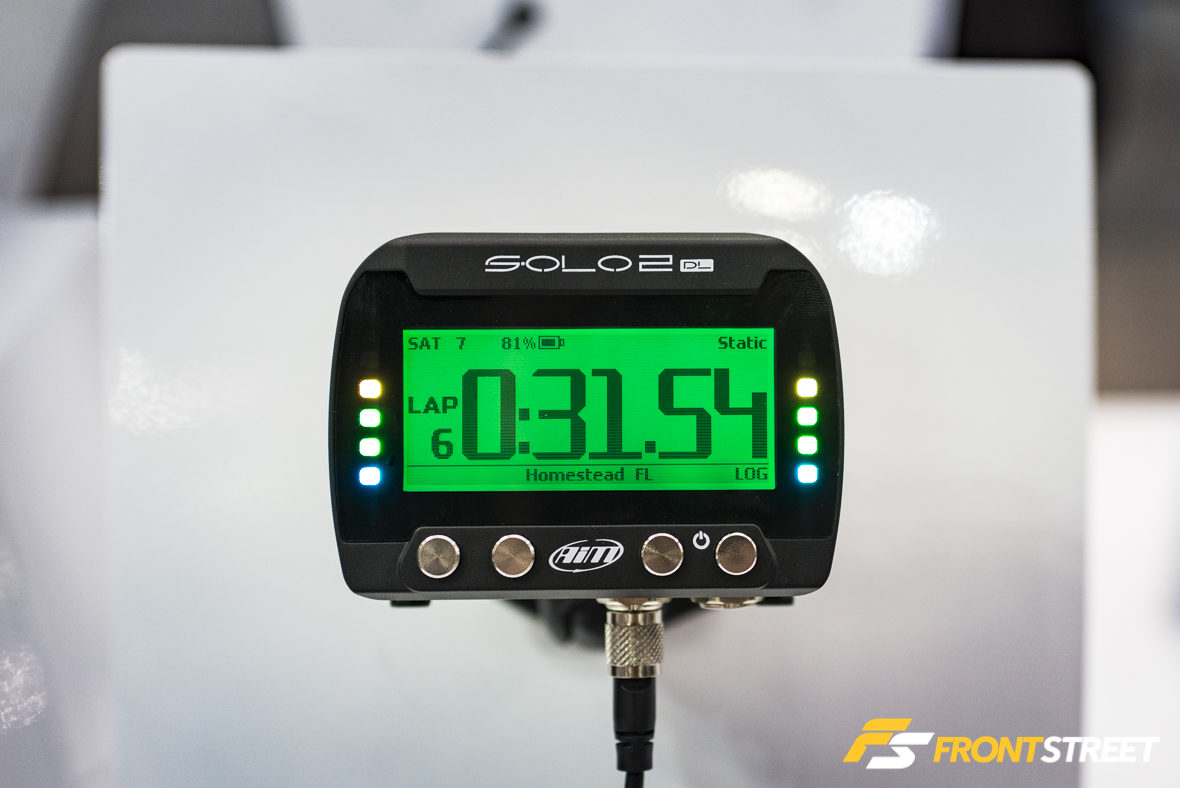
AiM Technologies manufactures an abundance of products involved with data logging and race timing, but their grassroots product garnered my attention the most. Built off the same platform as their previous Solo device, the new Solo 2 and Solo 2 DL utilize a new screen and LED lights to more precisely transmit data to the user. In OBD2 scenarios, the LED lights flanking the screen are completely programmable to read anything from engine revs, to water temperature. The user can even set them as lap timer readouts to display whether their current lap is faster or slower than their last. On top of that, the increment of measure for each LED is also programmable, so whether the user wants to display 100 rpms/LED, or 1000 rpms/LED, it is possible. The best part is that pesky cords aren’t needed for data transfer onto a computer anymore, as the device is now Wi-Fi enabled. It even uses the same mounting holes as its predecessor—though a new bracket will need to be fitted. Sign me up!
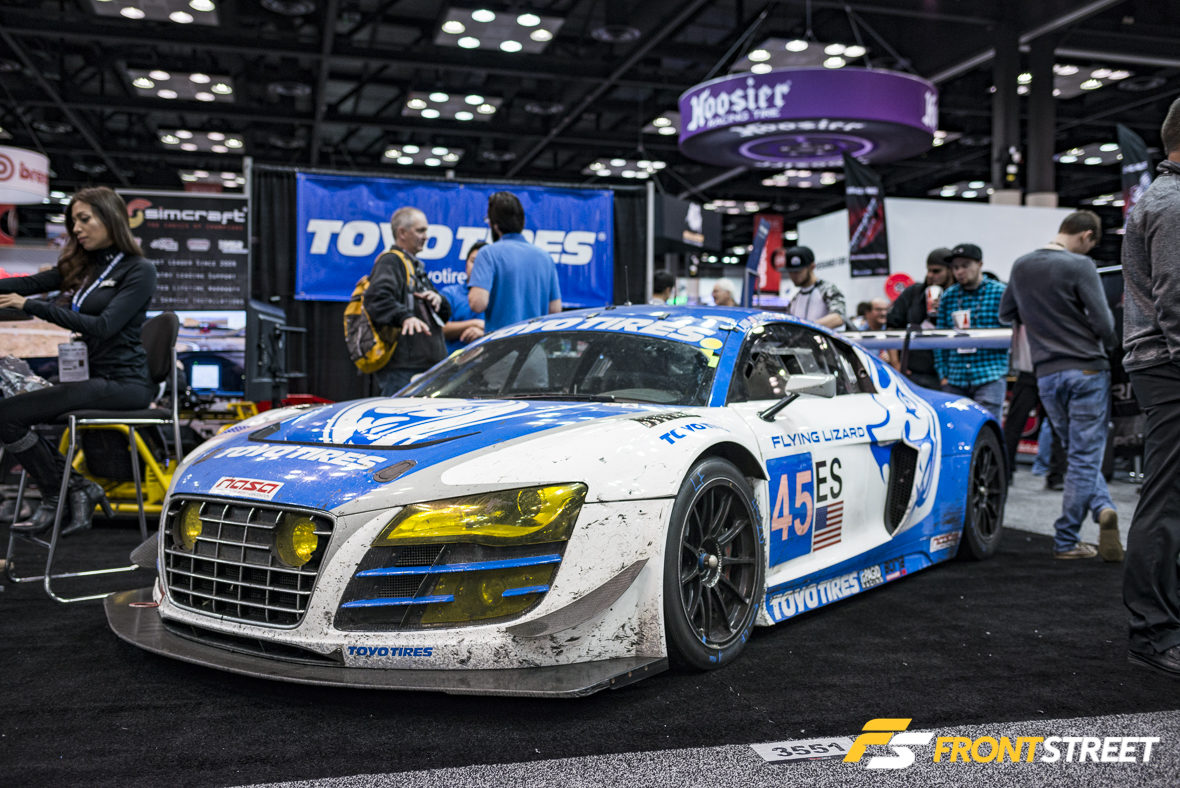
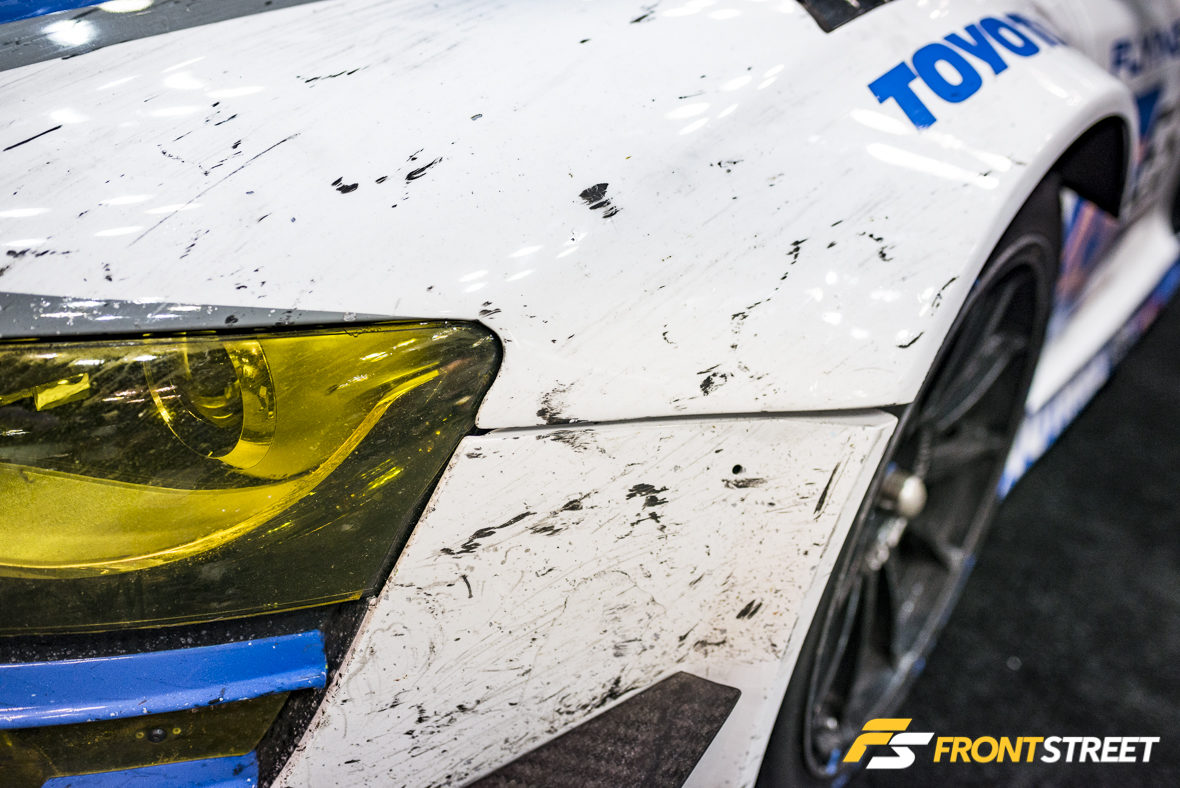
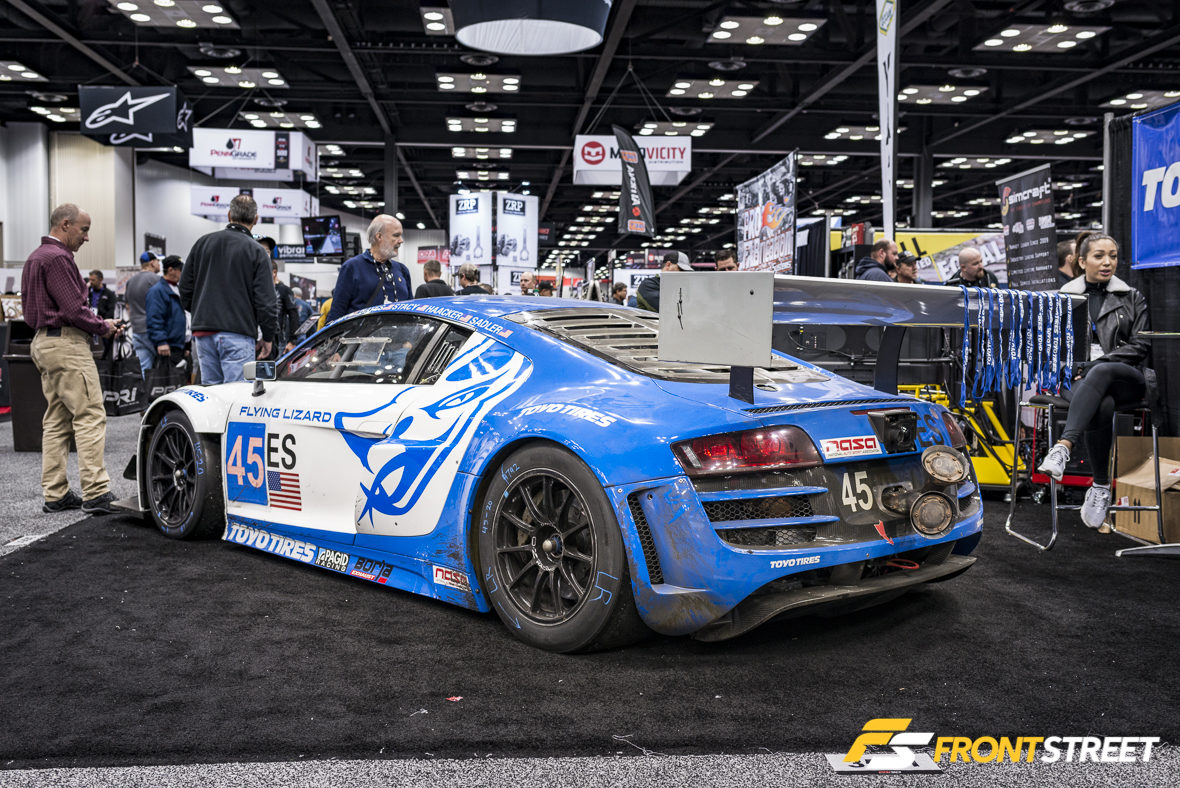
Fresh from yet another victory at the 25 Hours of Thunderhill race, the Toyo Tires booth again housed the class (and overall) winning No. 45 Audi R8 LMS from Flying Lizard. Clad in its usual guise of dirt, rubber, and bruises from the hard-fought endurance race, this car shows what this event is all about. The crossroads where innovation meets hardship and perseverance to take home the coveted victory.
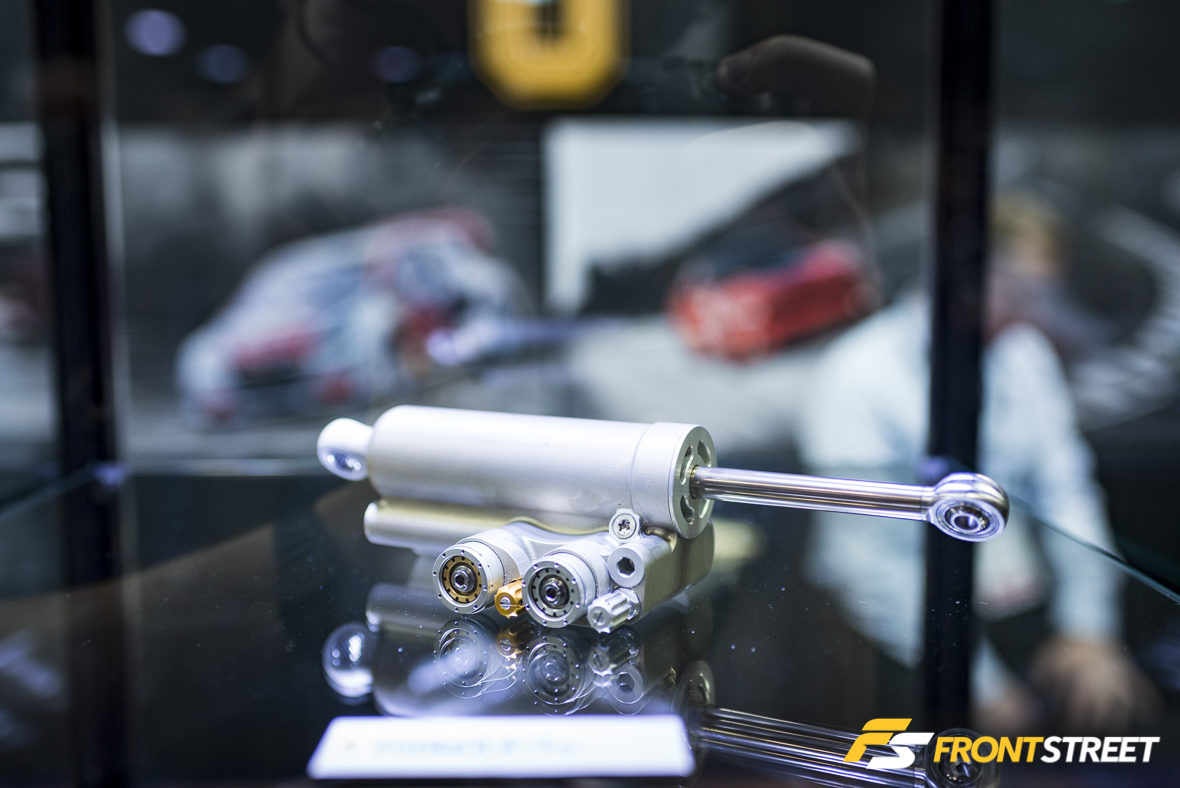
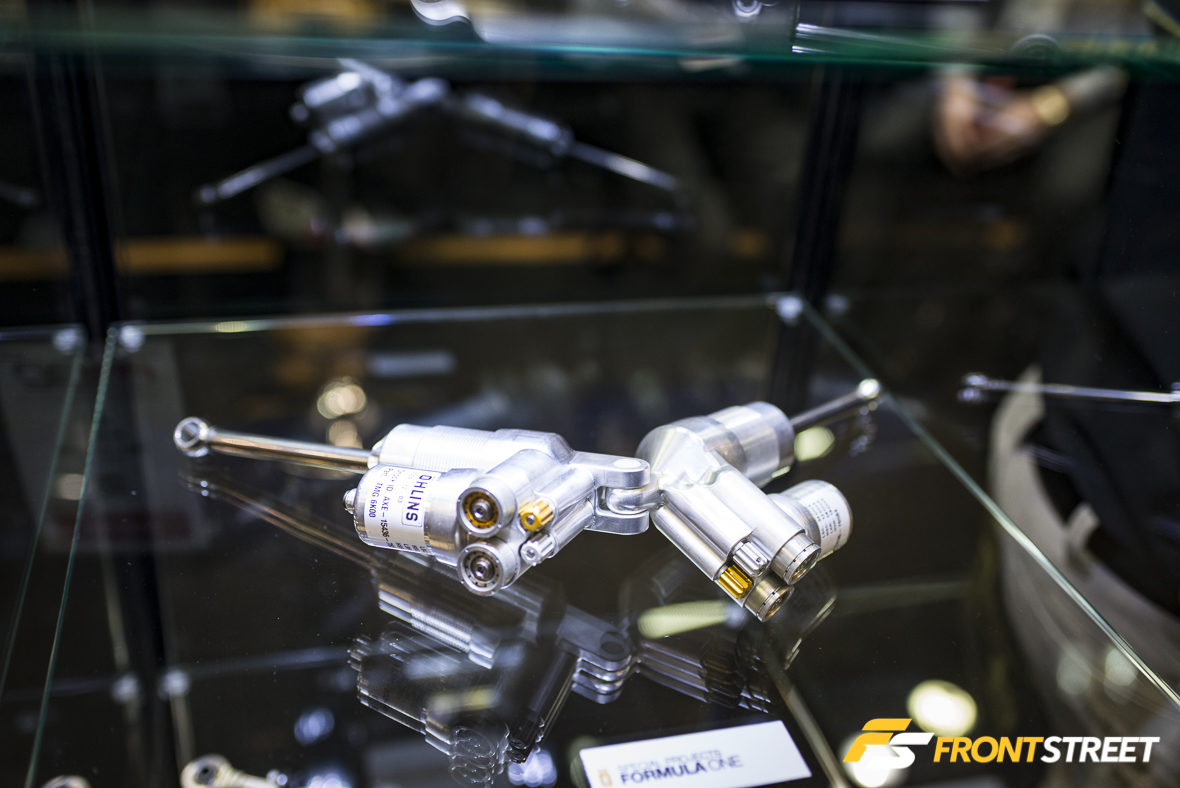
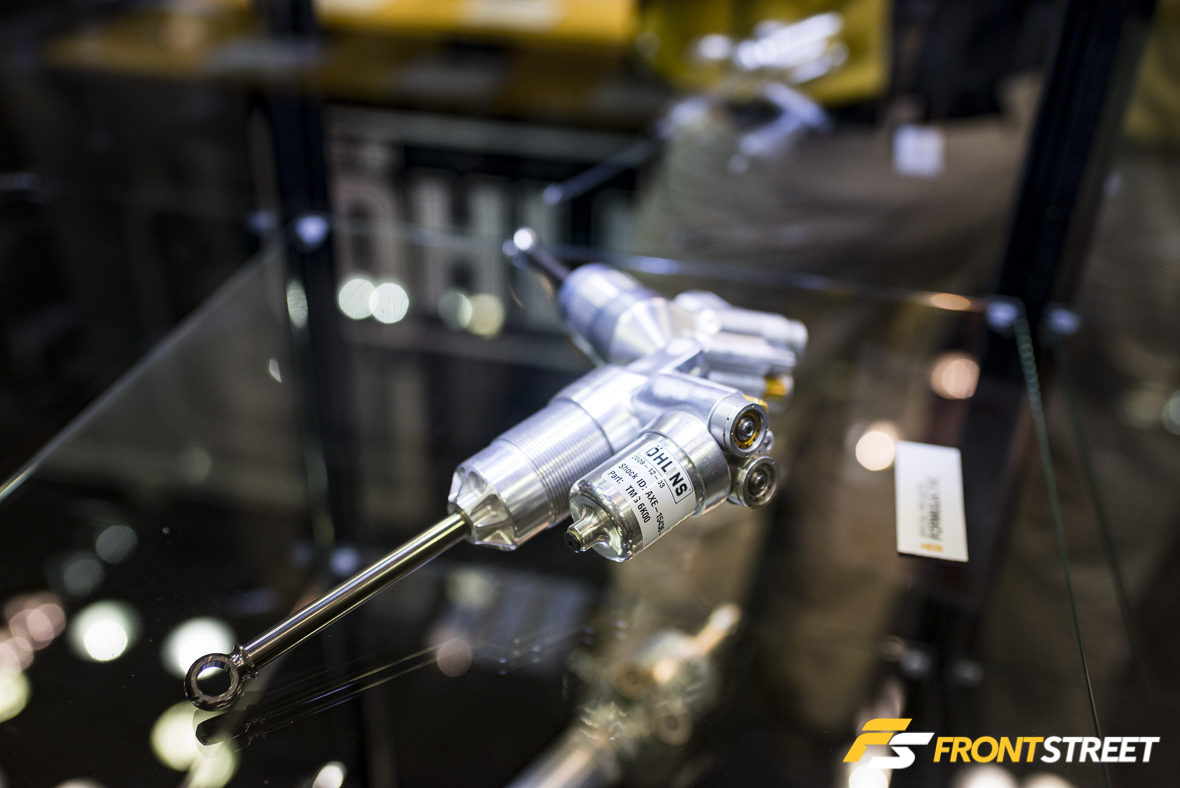
It really is inspiring how many automotive part manufacturers are involved with the highest end of motor racing. Here we have an Ohlins damper previously used on a Toyota Formula 1 car. This piece is no longer than my hand due to space constraints on the technical chassis, and the everlasting quest for lighter weight, yet it provides stability to some of the harshest suspension loads found in the world of motorsport. It is four-way adjustable with re-clocking and re-centering capabilities, so the adjustability of the damper is never compromised by any certain setting. By now this technology is outdated in the realm of Formula 1, so some of these innovations—like the compact adjusters—have already trickled down into commercial versions of Ohlins dampers.
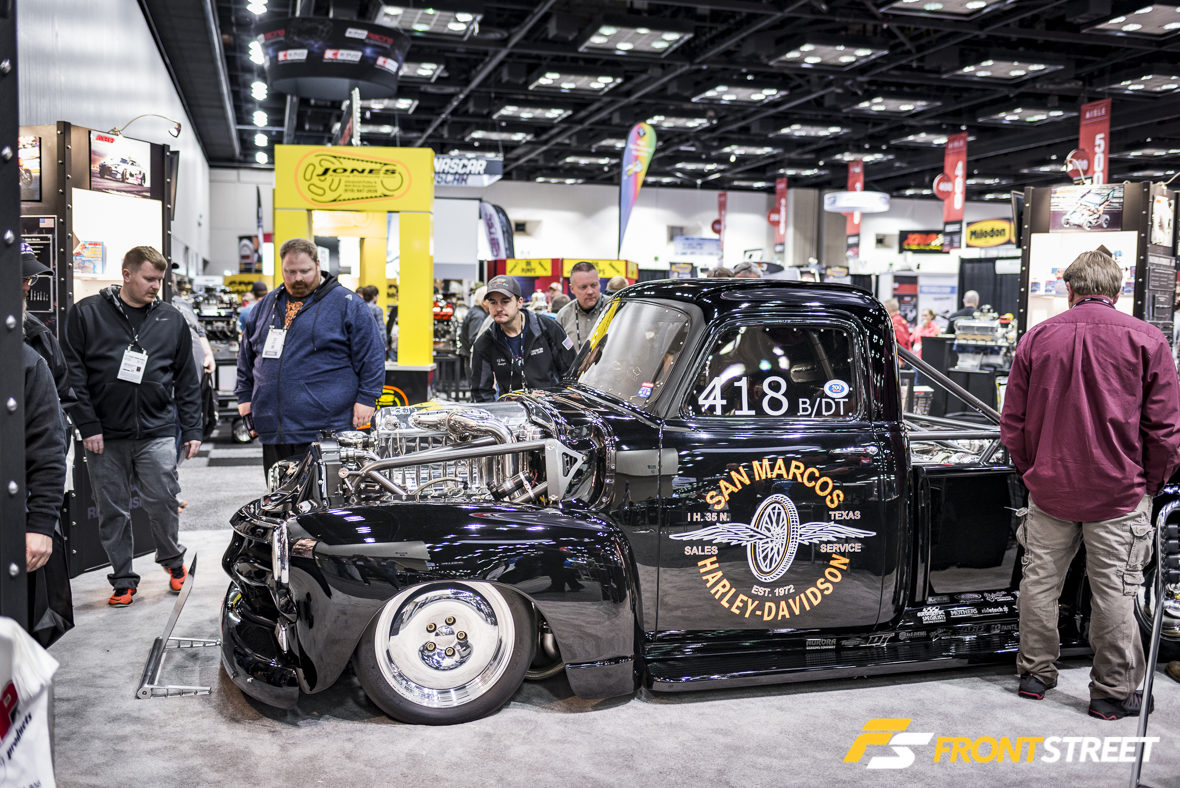
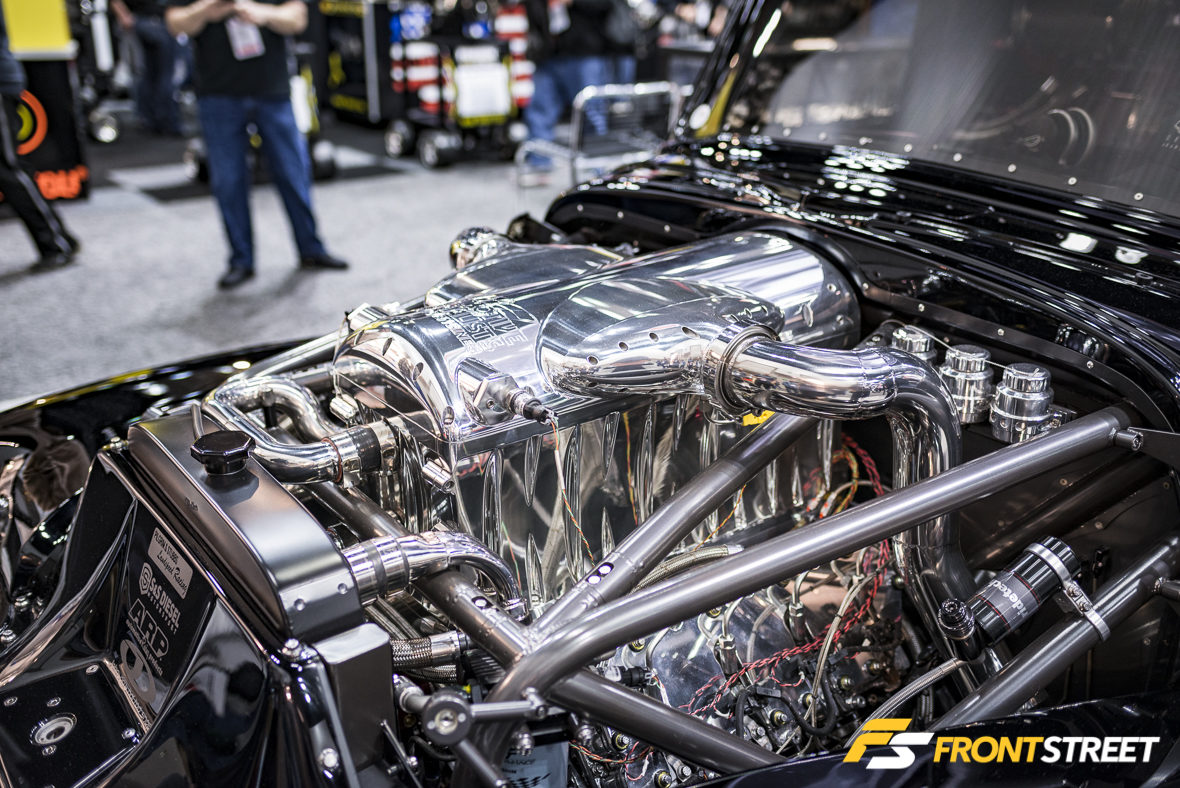
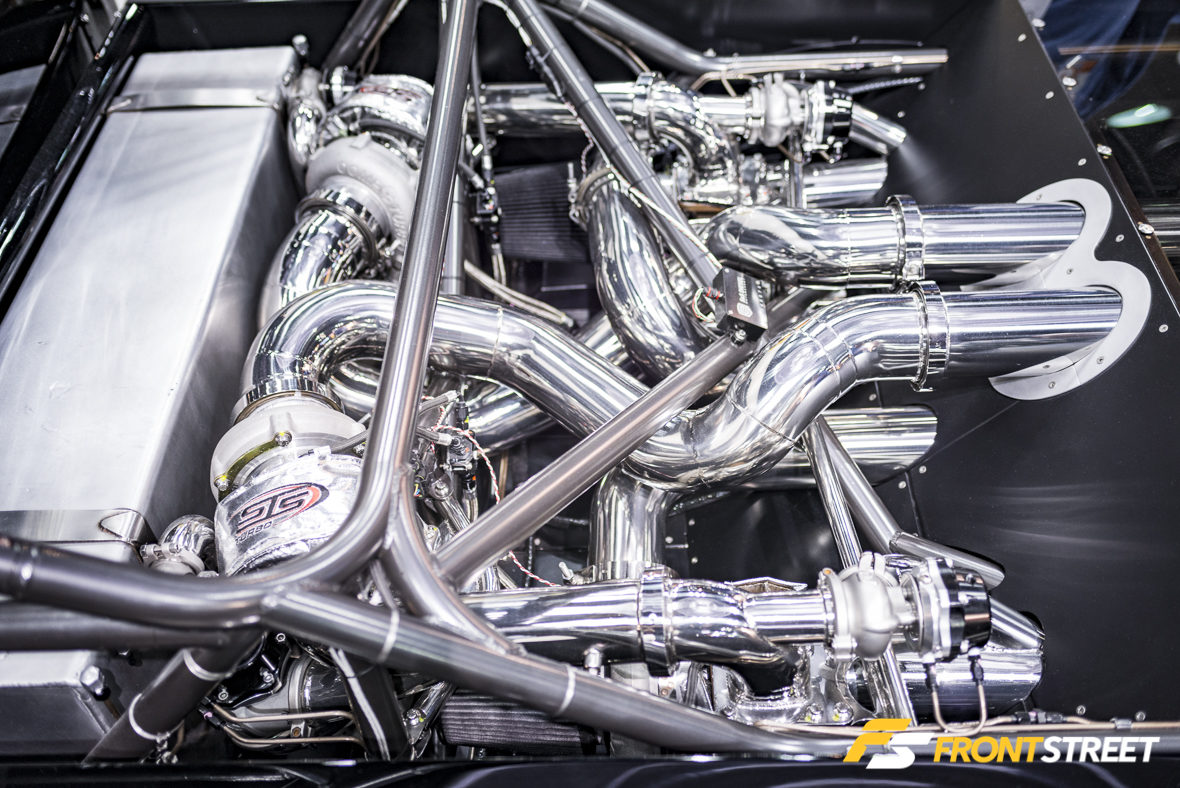
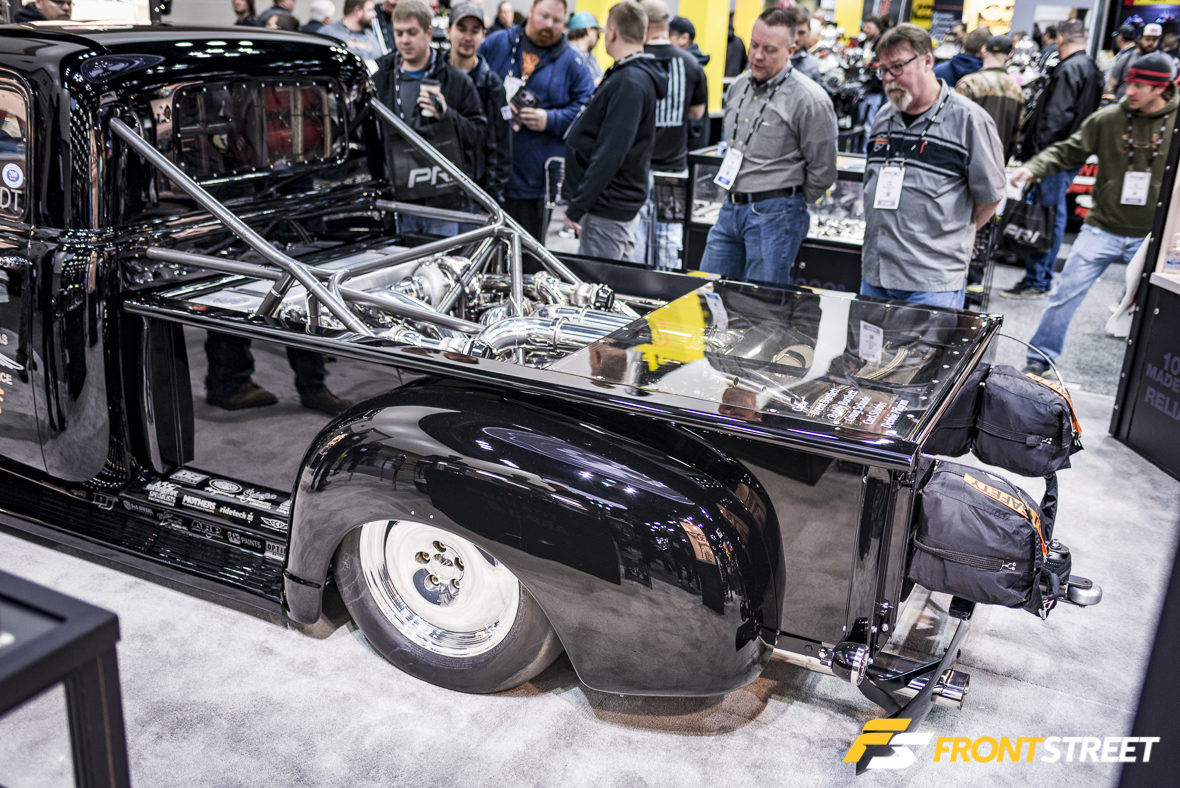
We’ll end with a vehicle built for a completely different kind of racing discipline—landspeed records. Initially purchased as a family truck, David Pilgrim’s 1954 Chevrolet Truck in the ARP Hardware booth was transformed into a company truck once Pilgrim started his own Harley-Davidson shop. Now having undergone a new transformation, the very same truck is fit for a new life as a tube-frame racer with Pilgrim & Stubbs Landspeed Racing. Outfitted with a completely mental quad-turbocharged Duramax engine pushing over 100 pounds of boost, the power numbers aren’t public but we’re sure the truck should produce some serious speed in Bonneville. It also is equipped with ARP hardware in every possible threaded opening throughout the chassis, which made it an obvious choice for display.
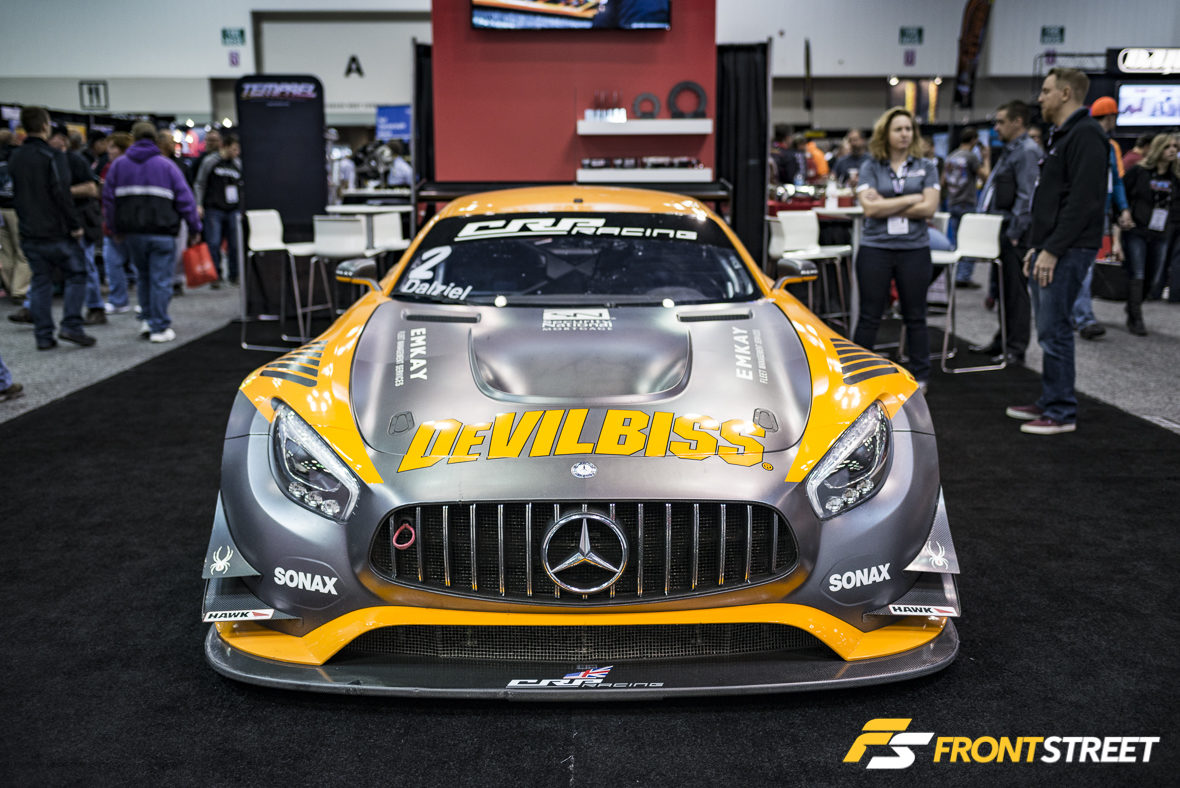
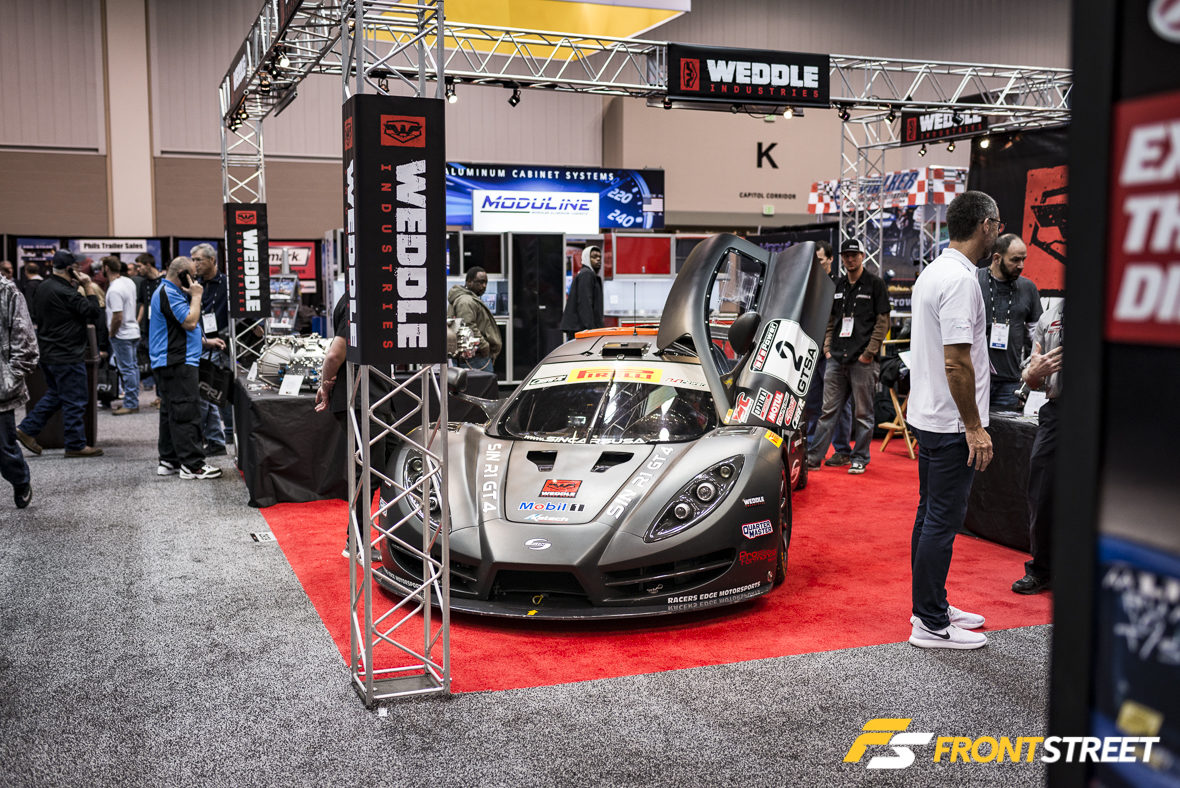
The PRI show may not be the shining media spectacle that its Vegas-inhabiting counterpart is, but what this event lacks in publicity, it makes up for in character and meaning. We hope you enjoyed our look into some of the specialty items at this year’s event, and look forward to showing you the highlights from next year’s.






























































